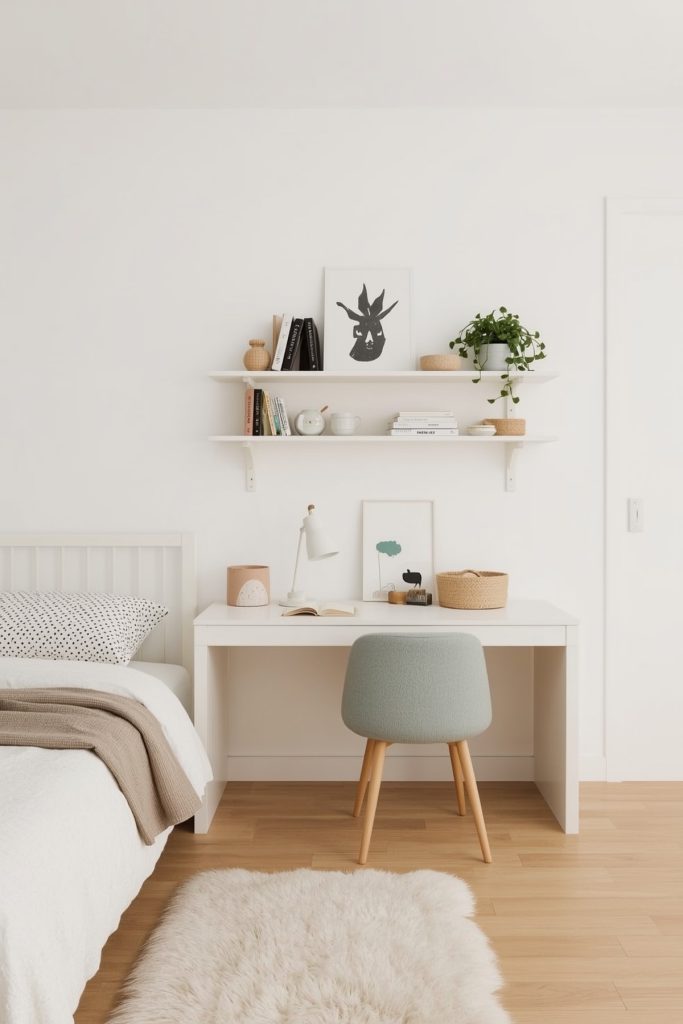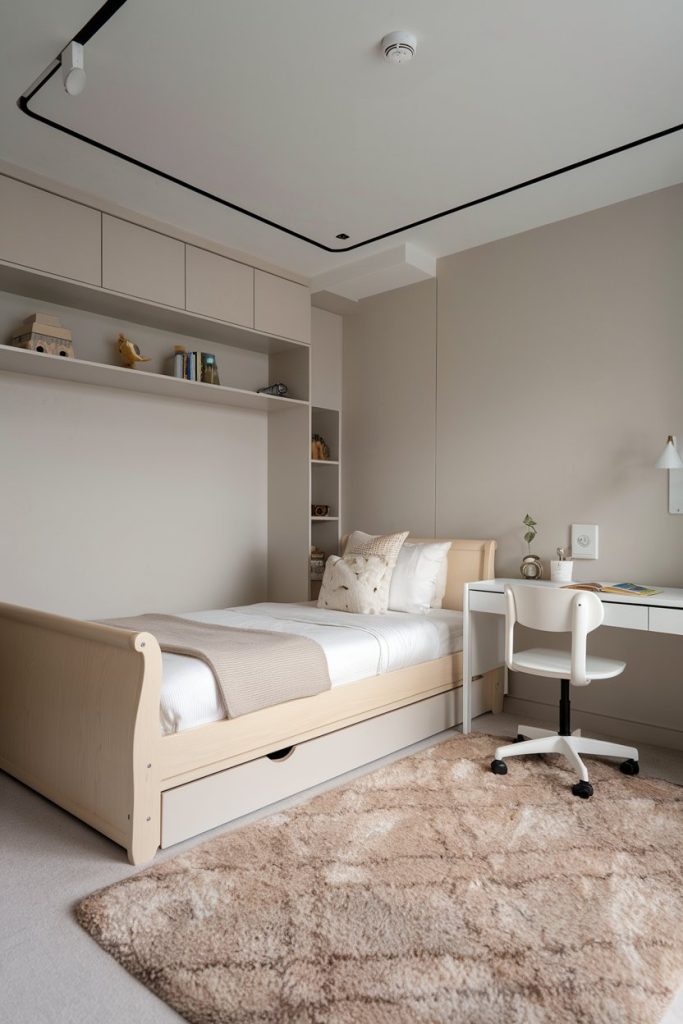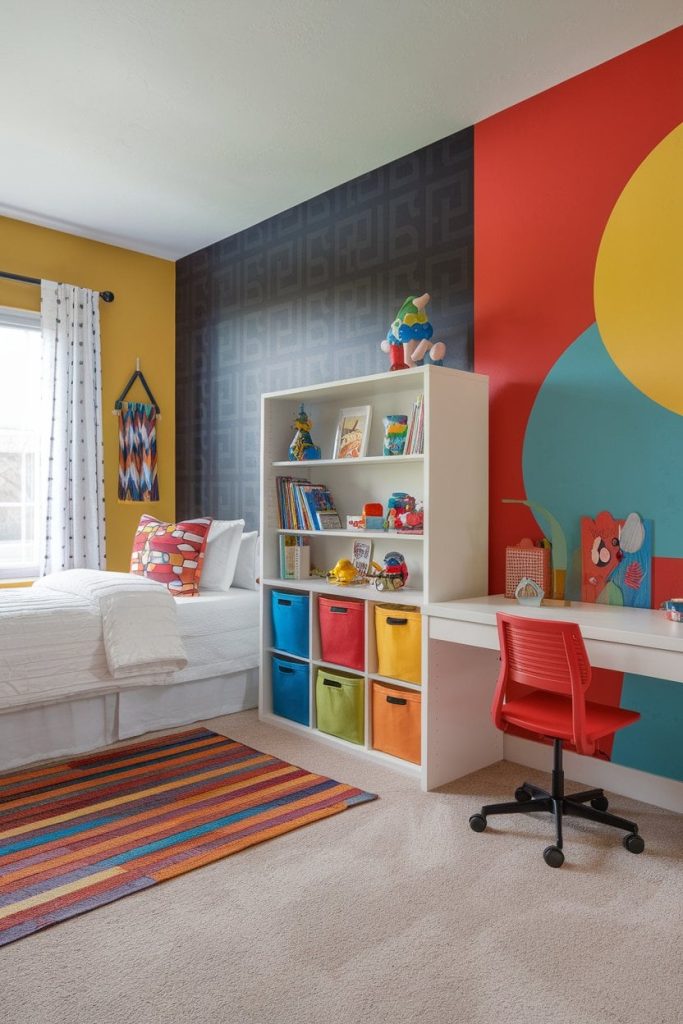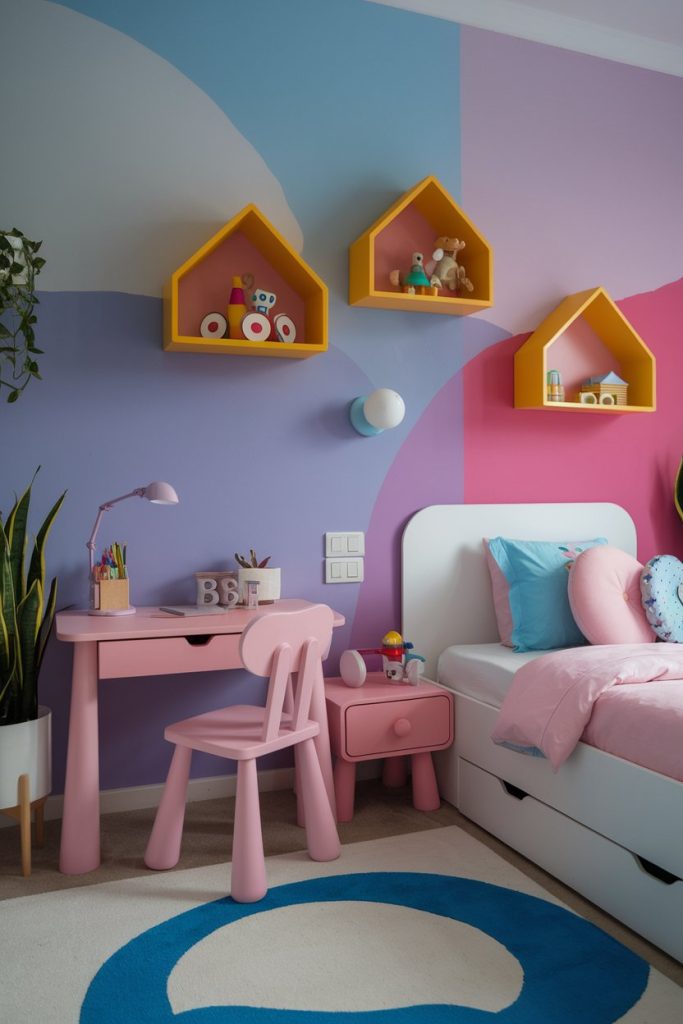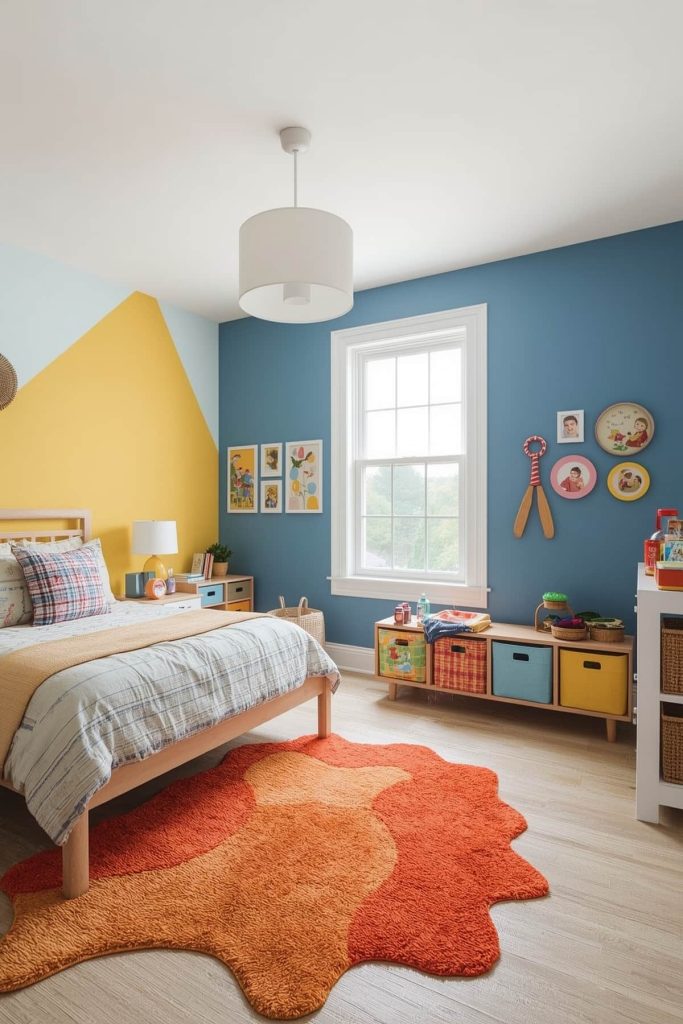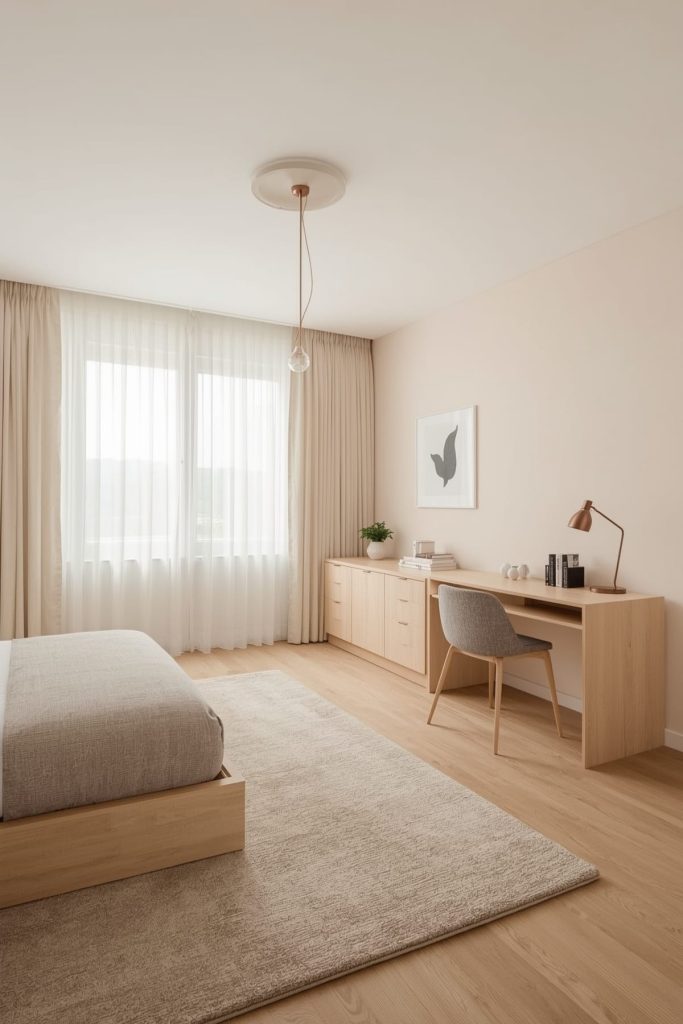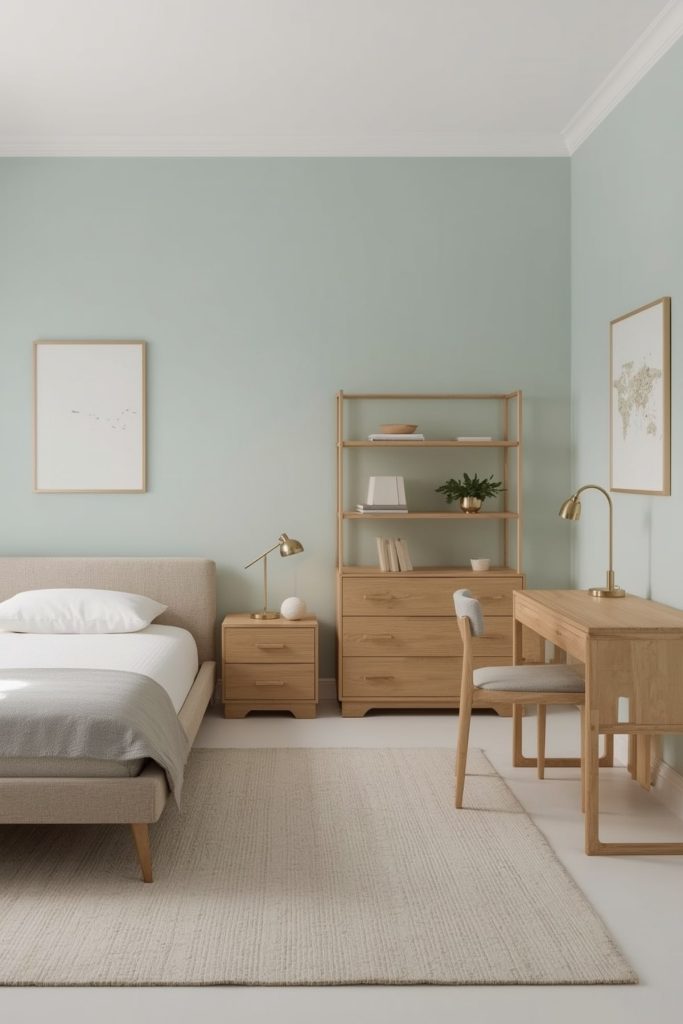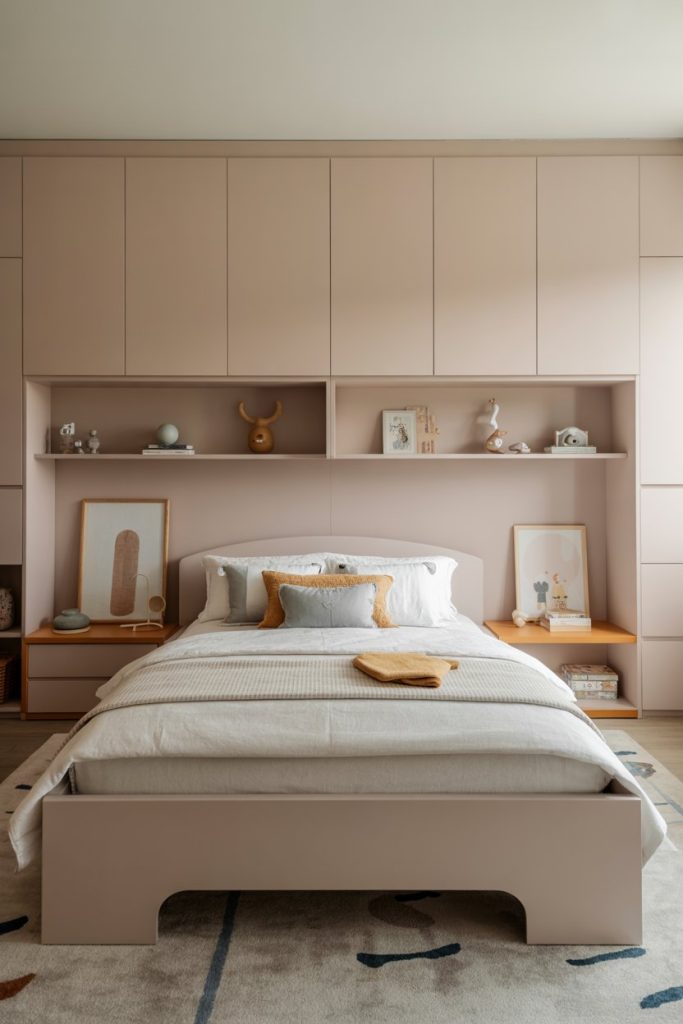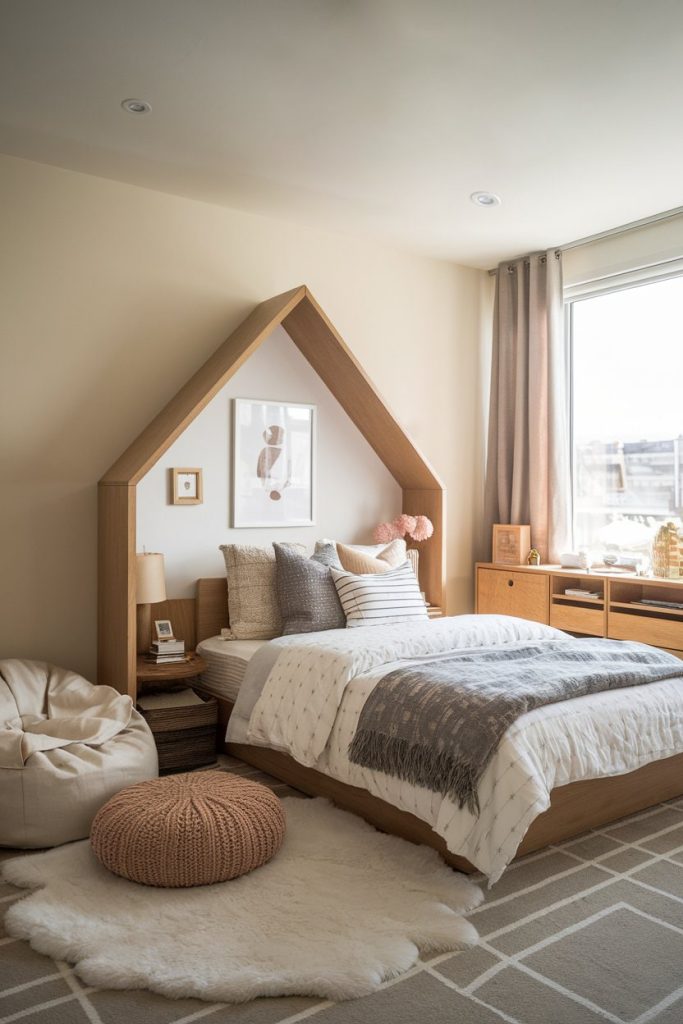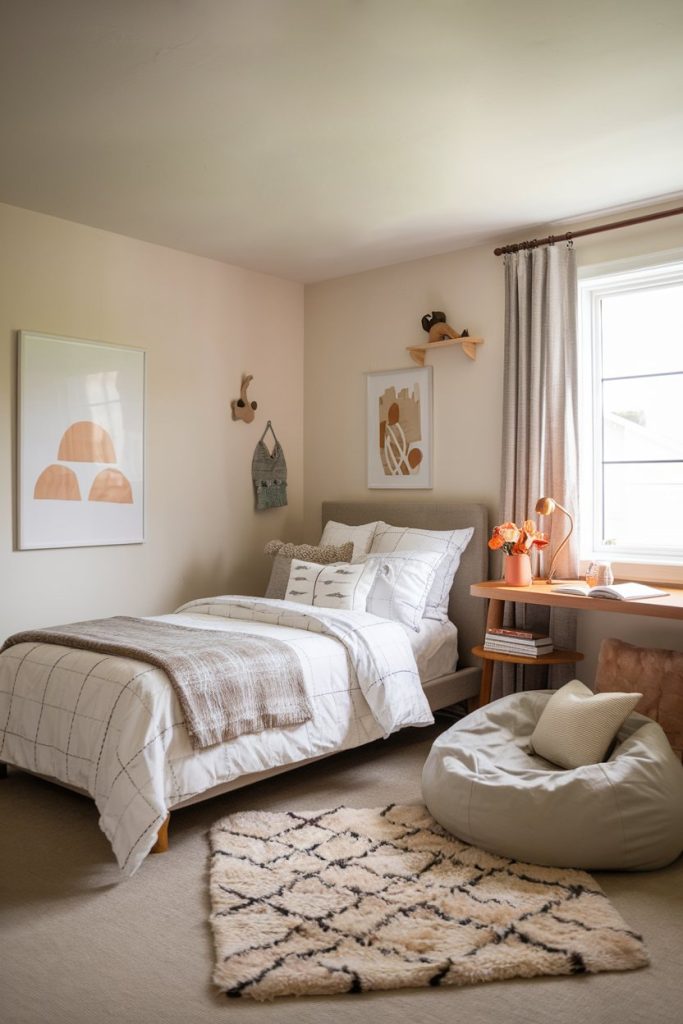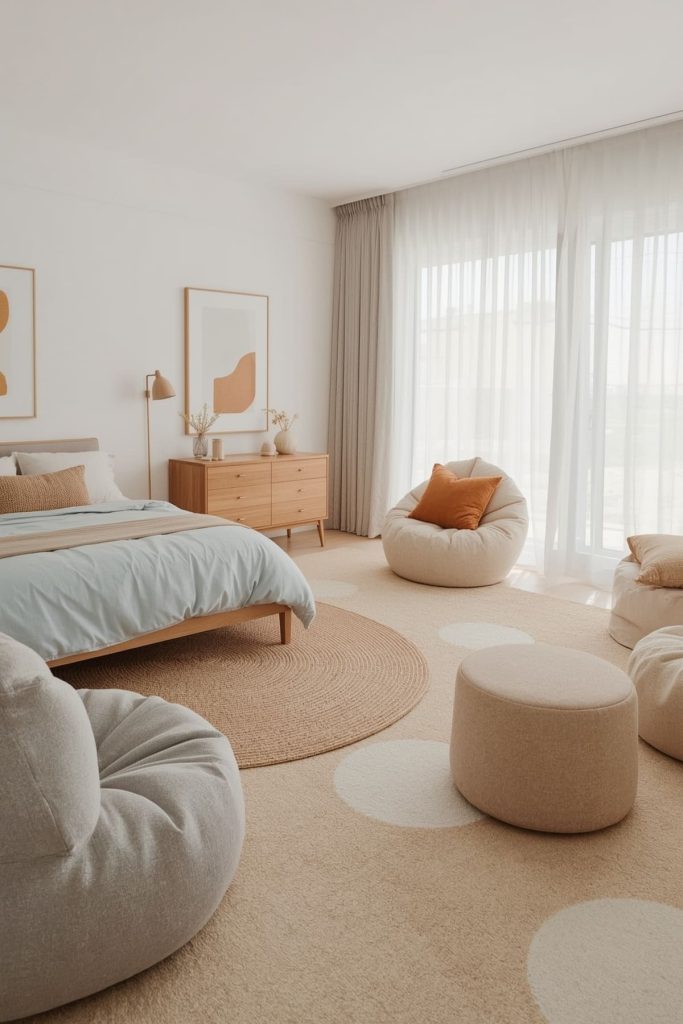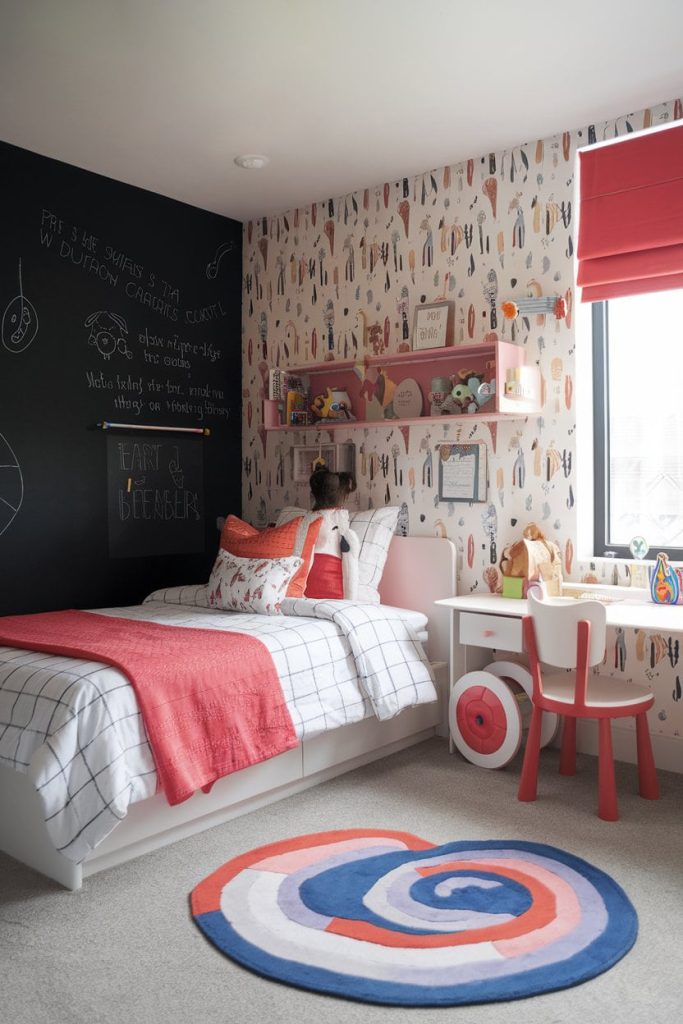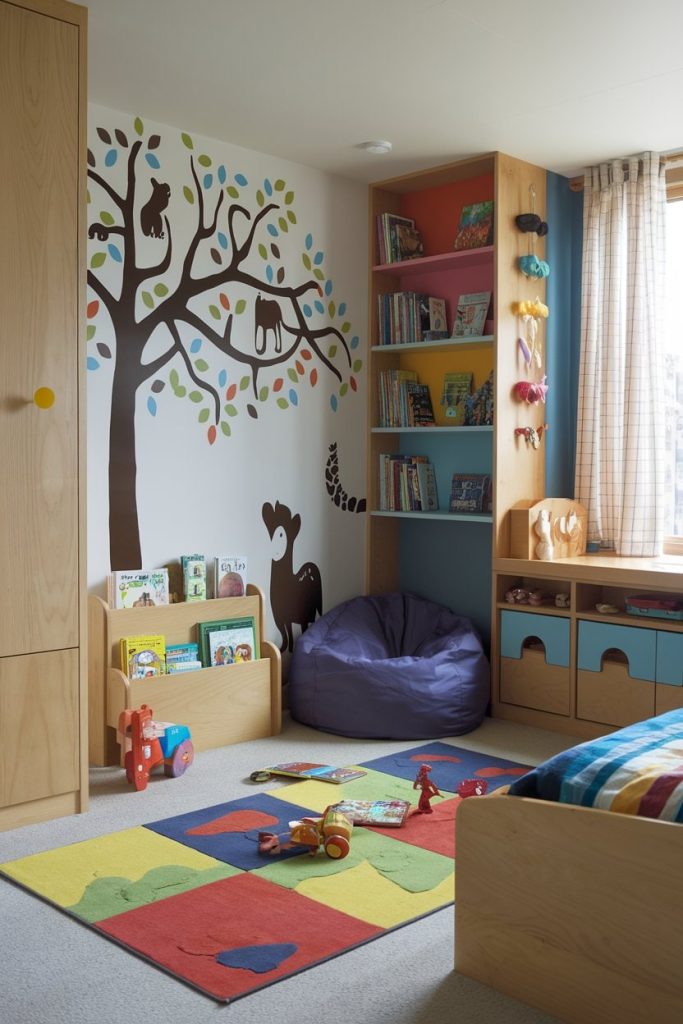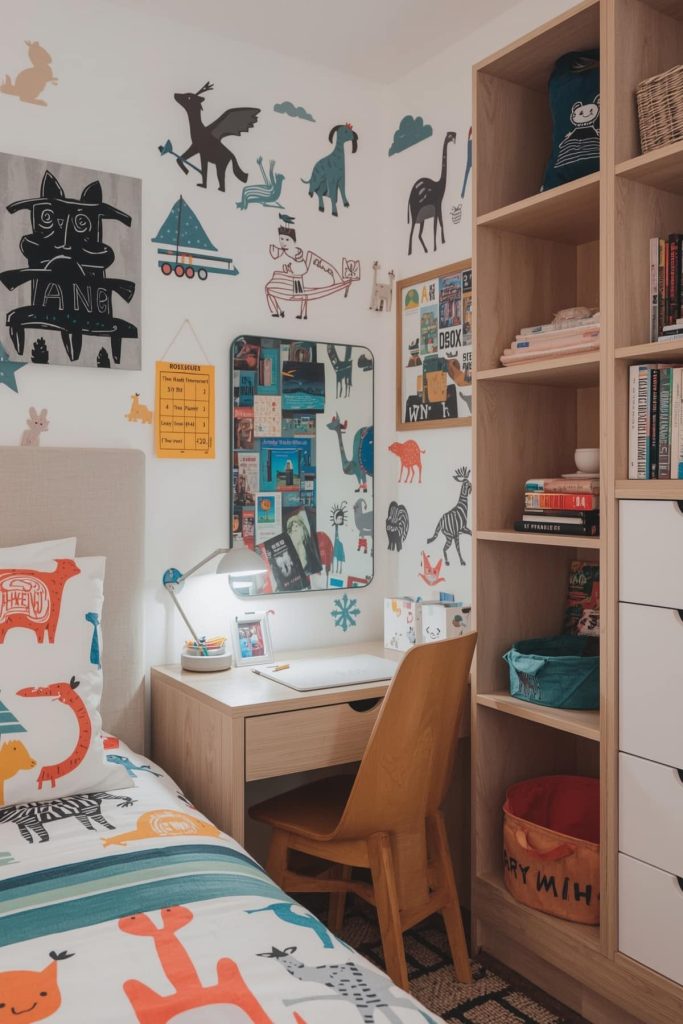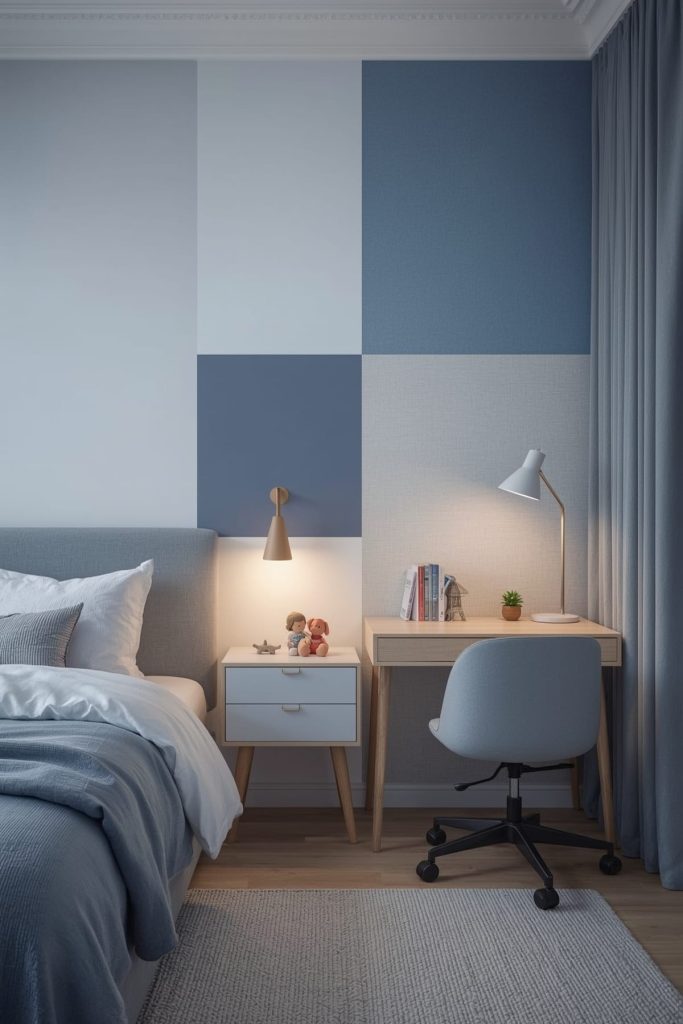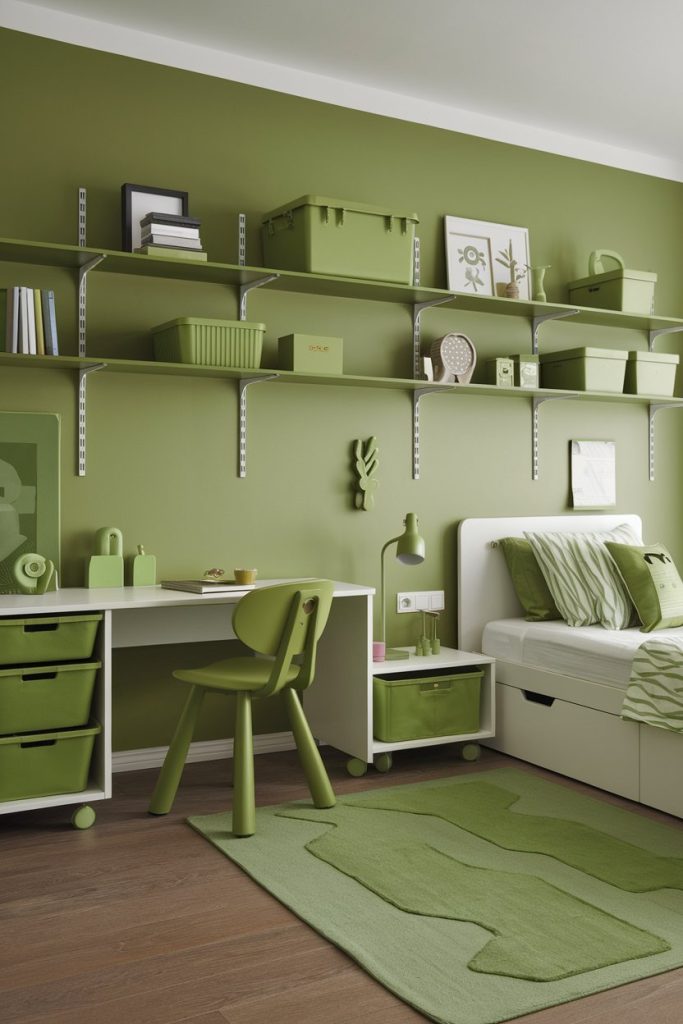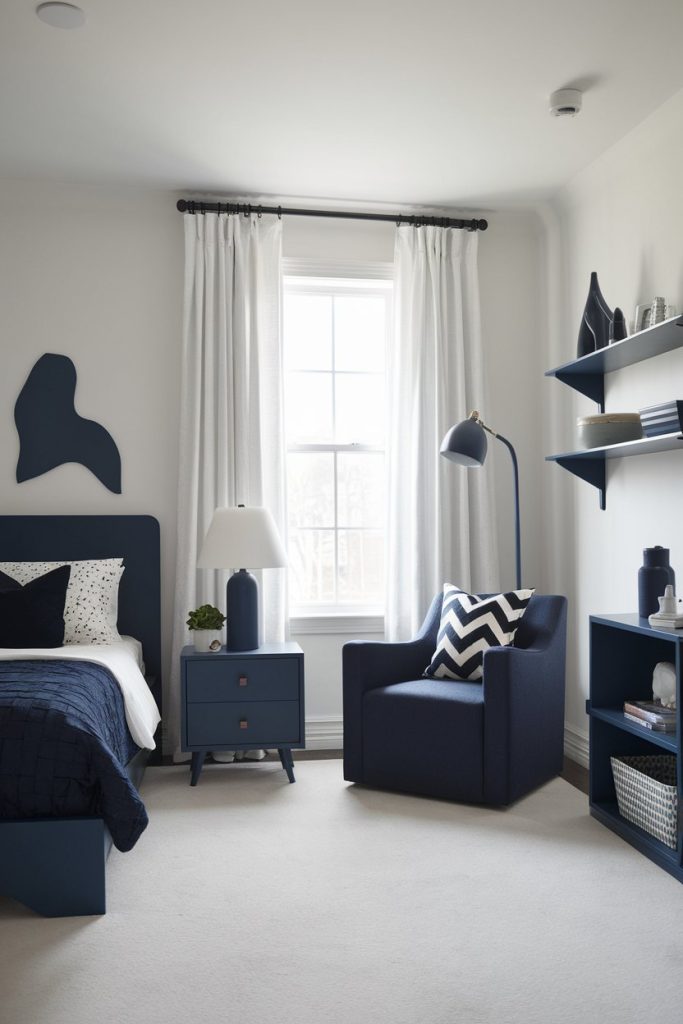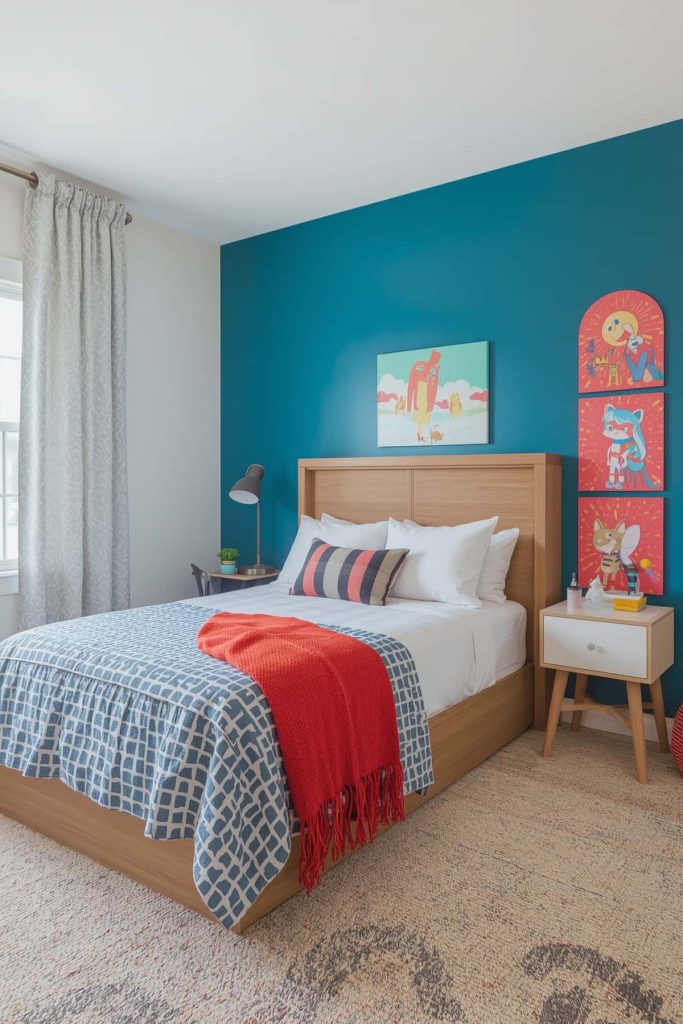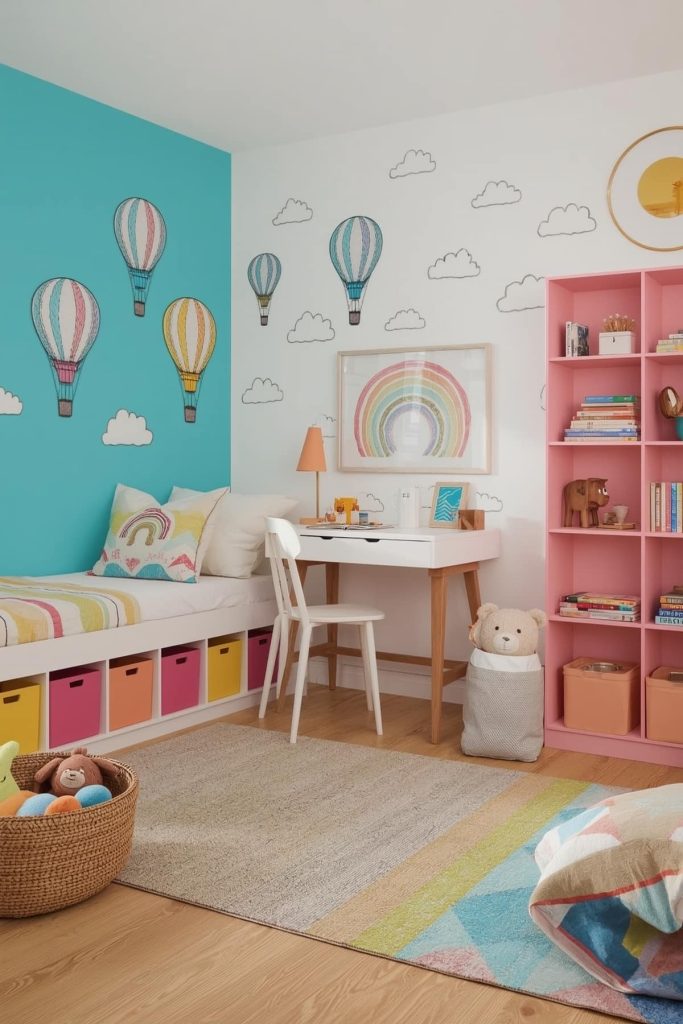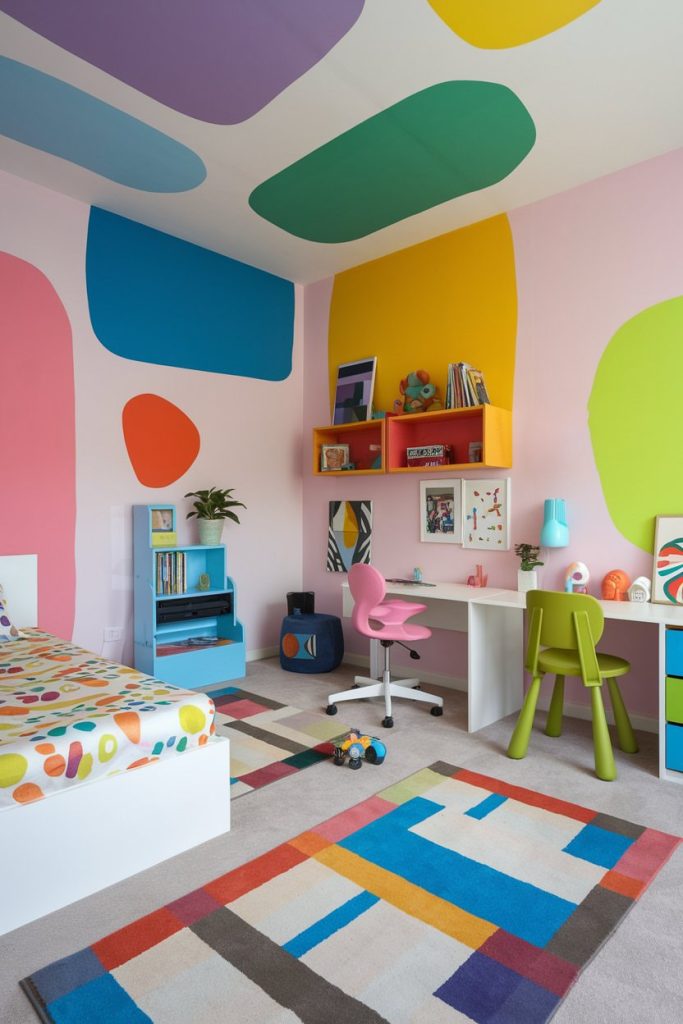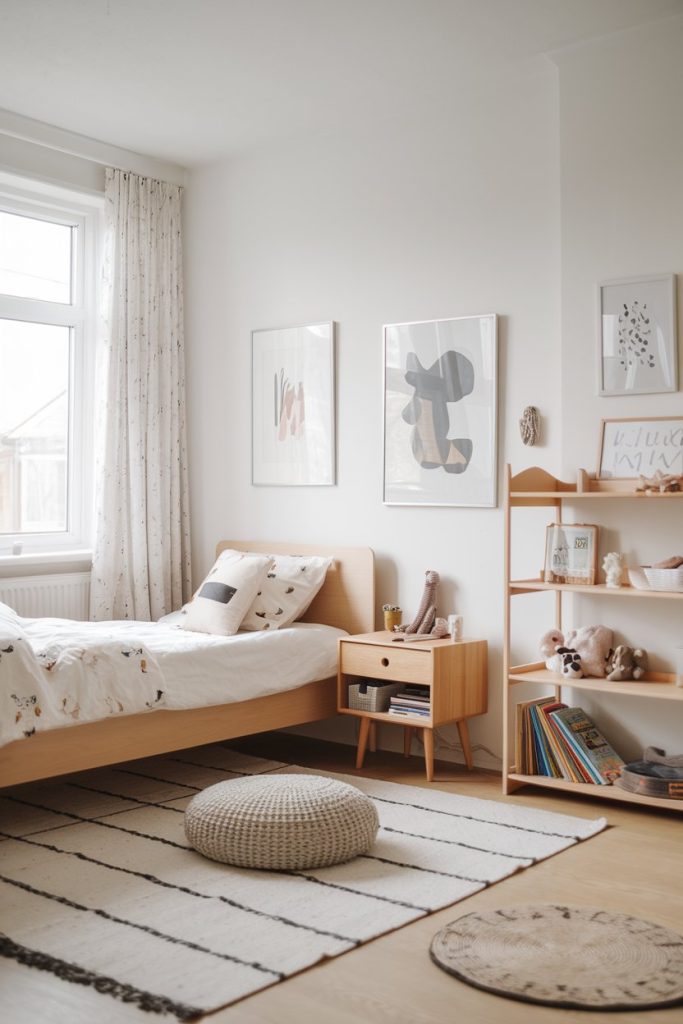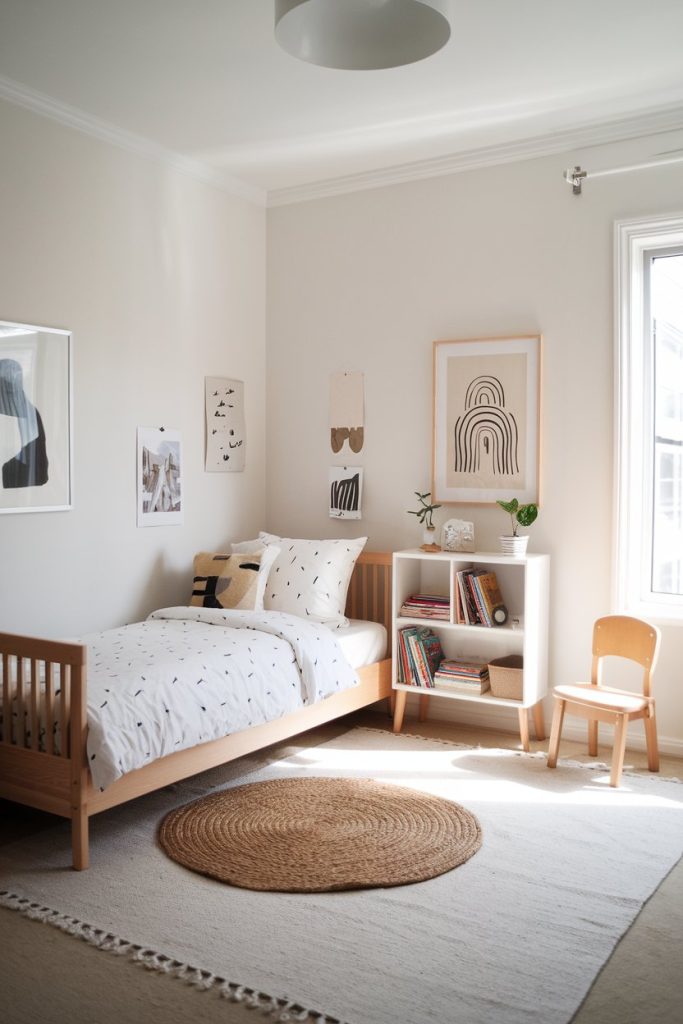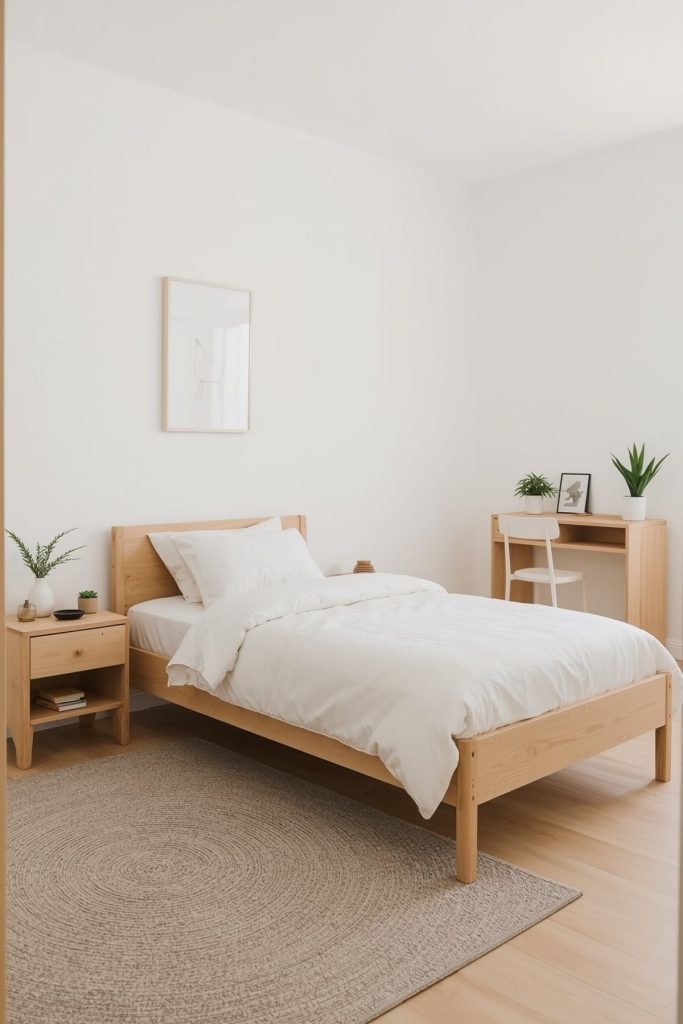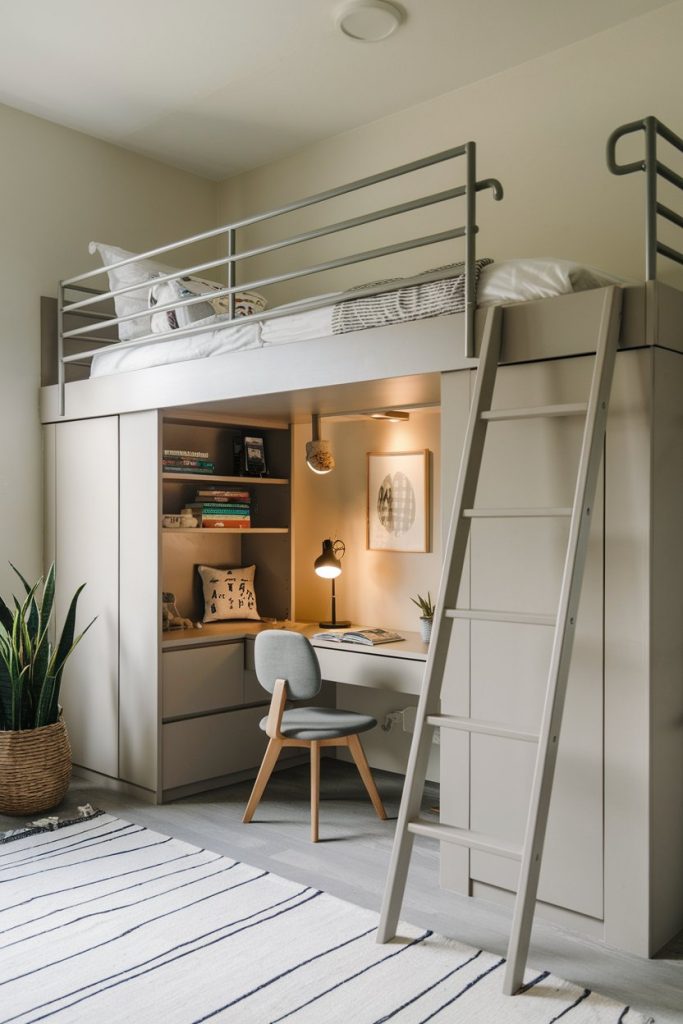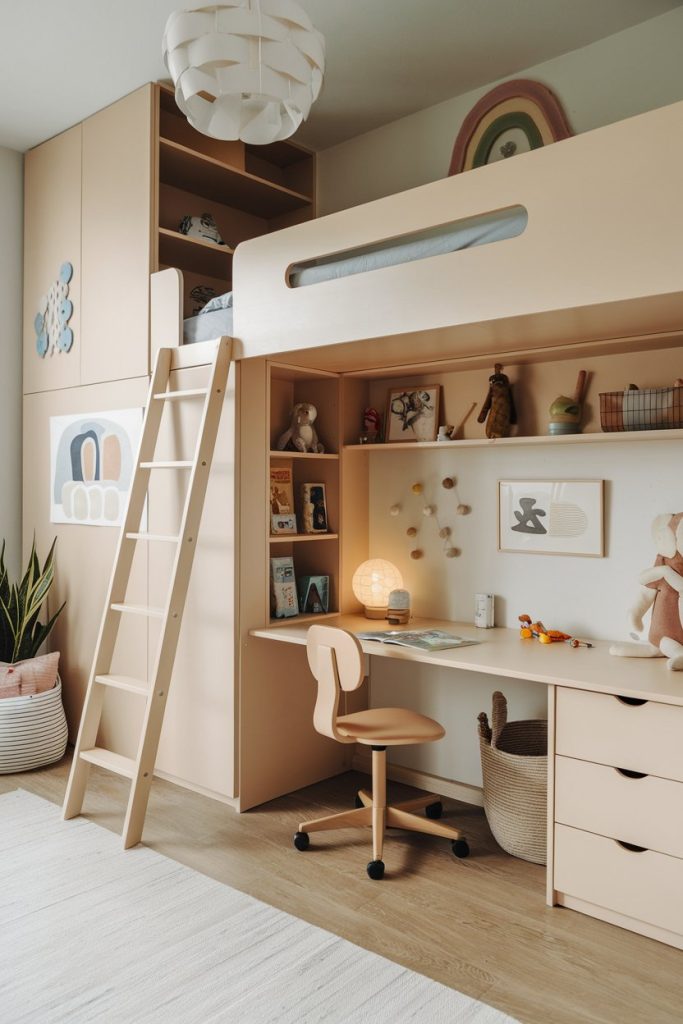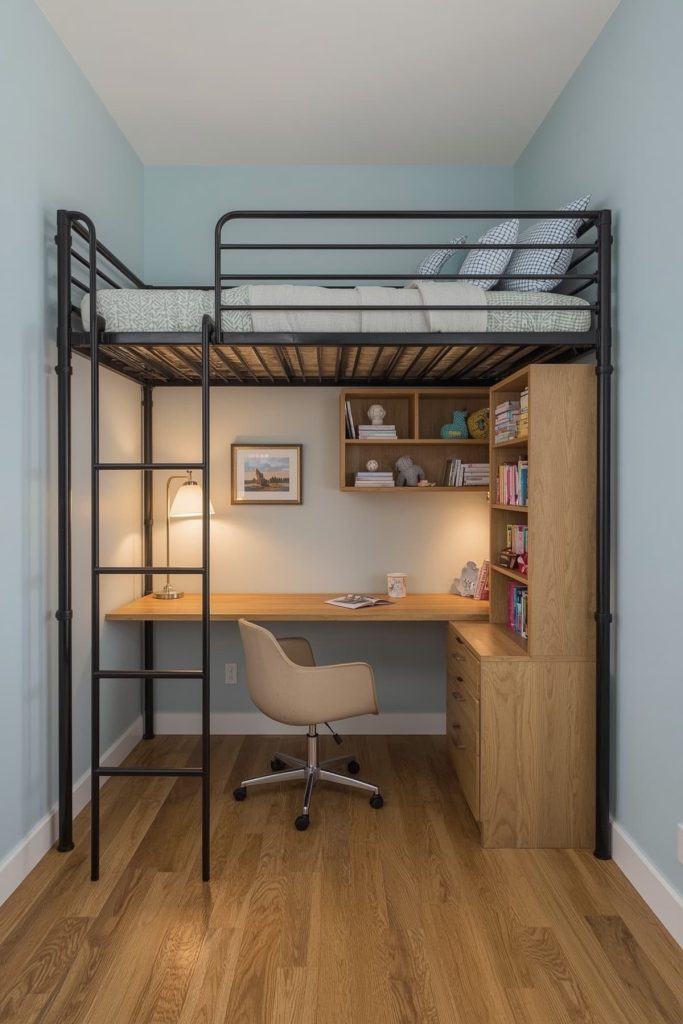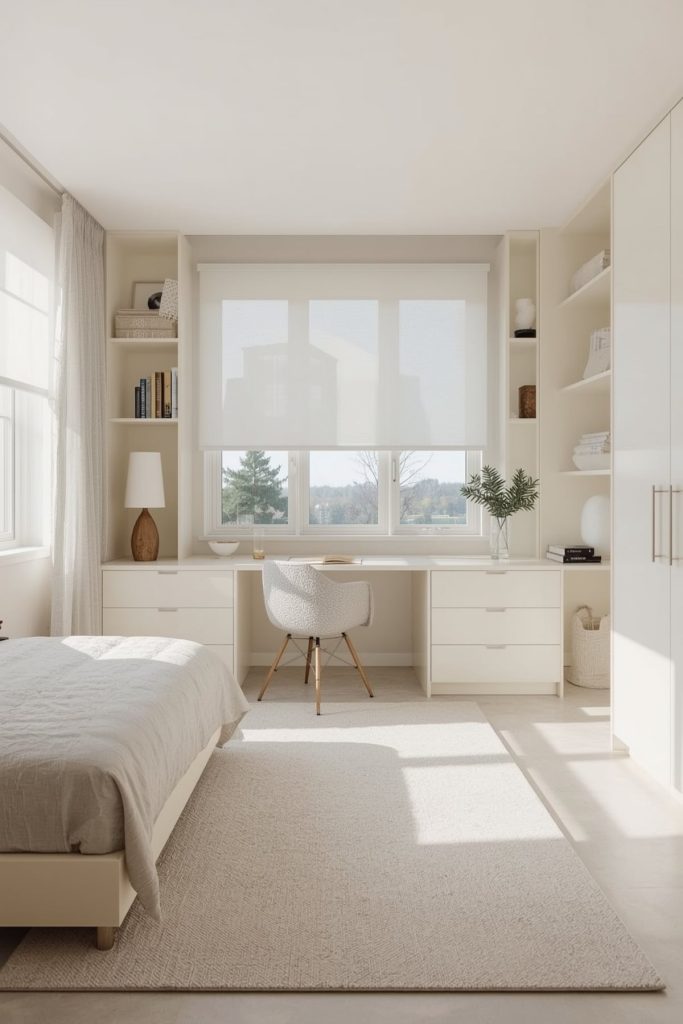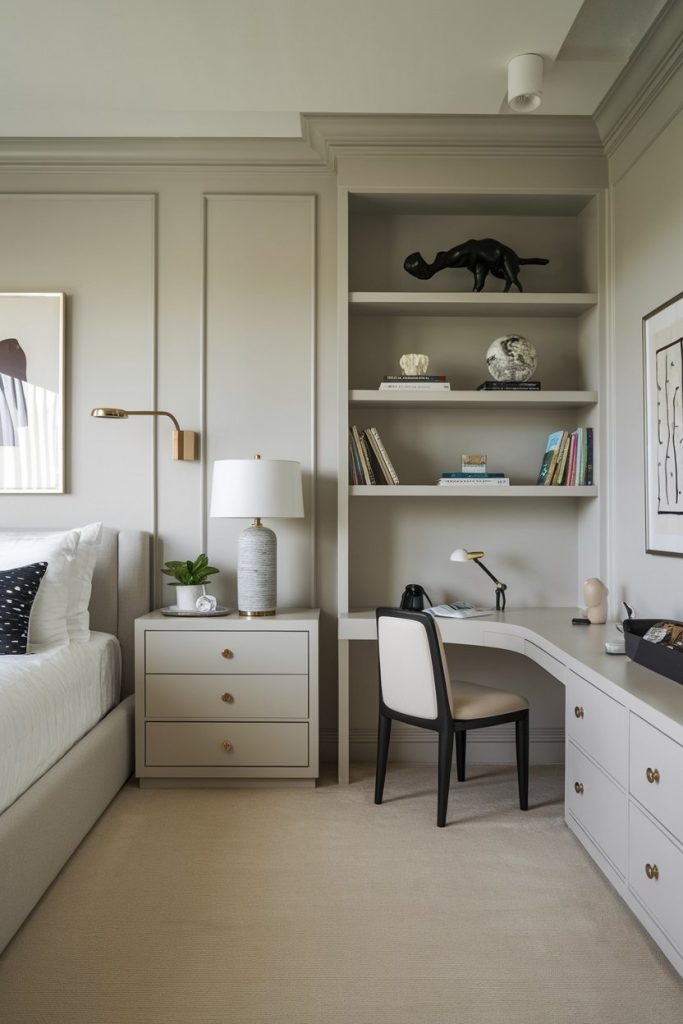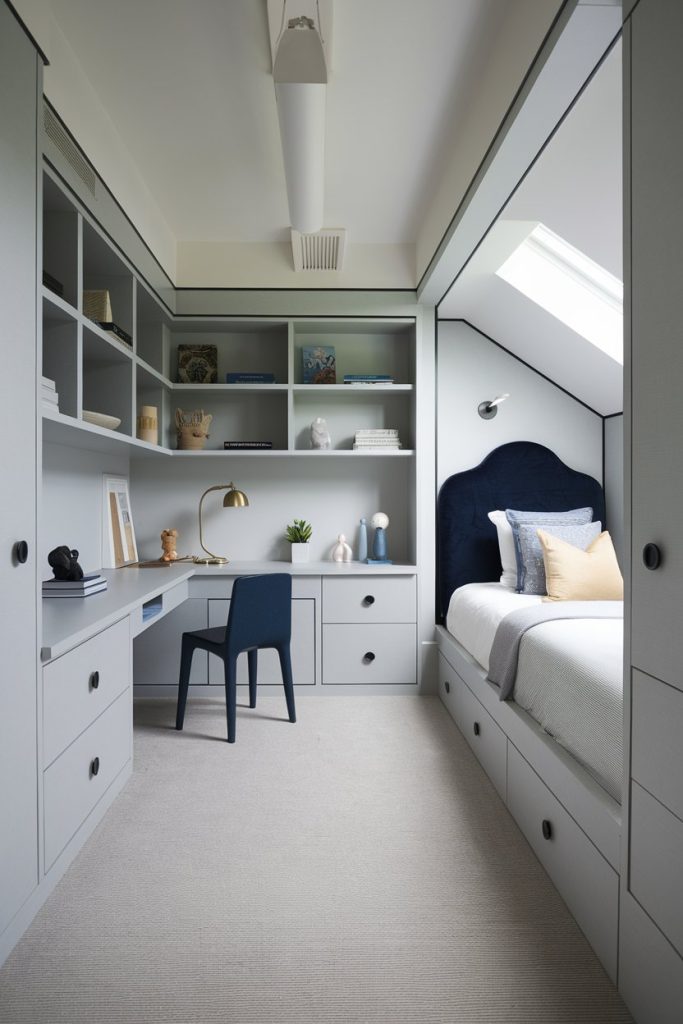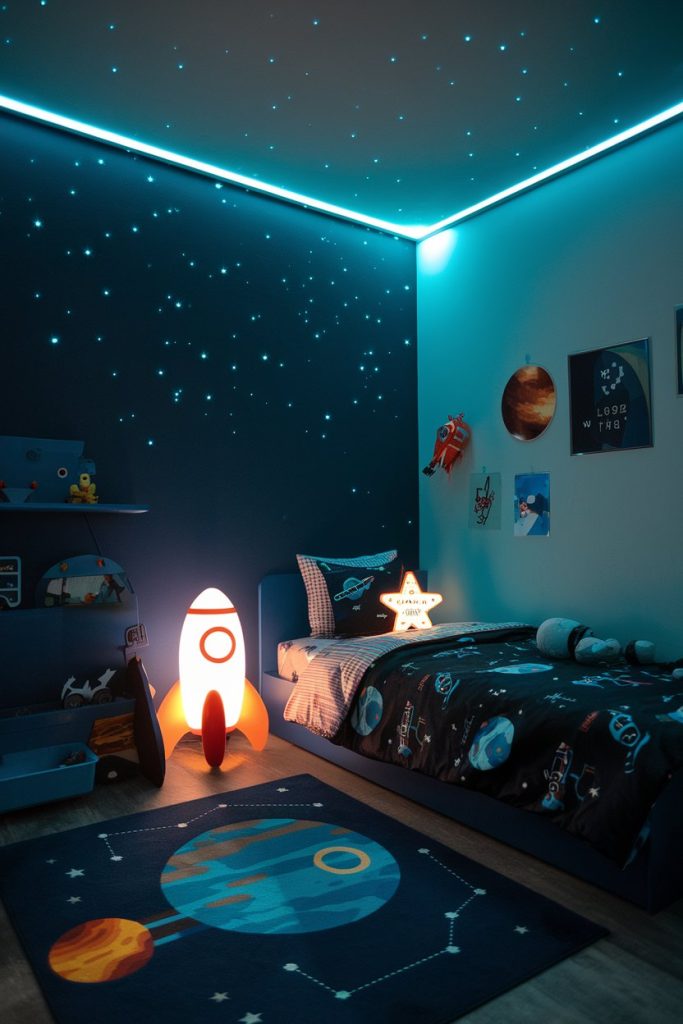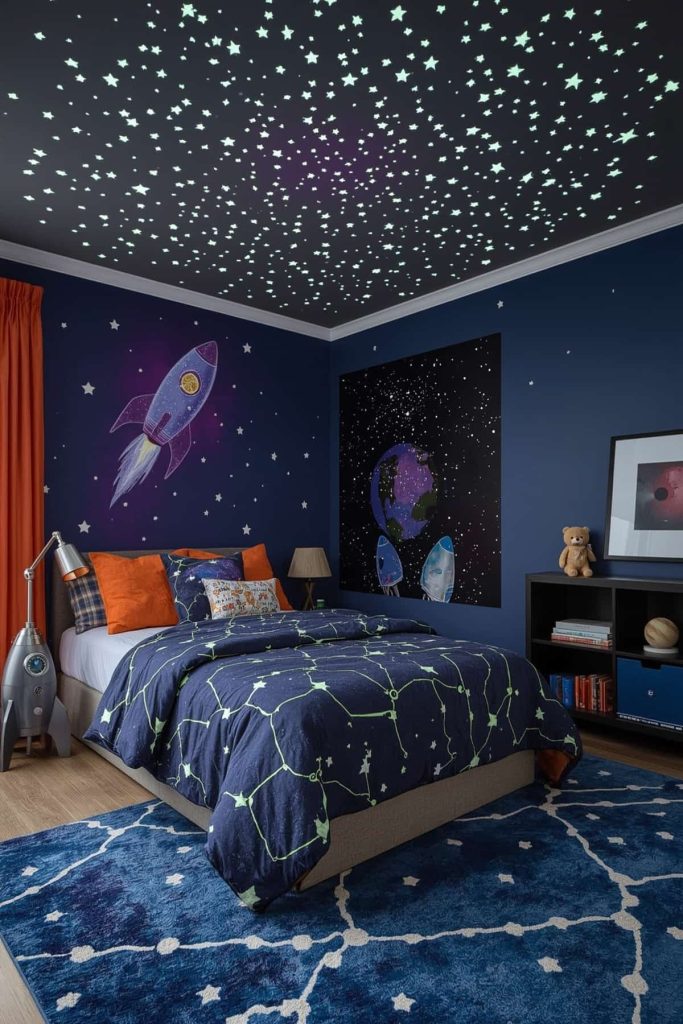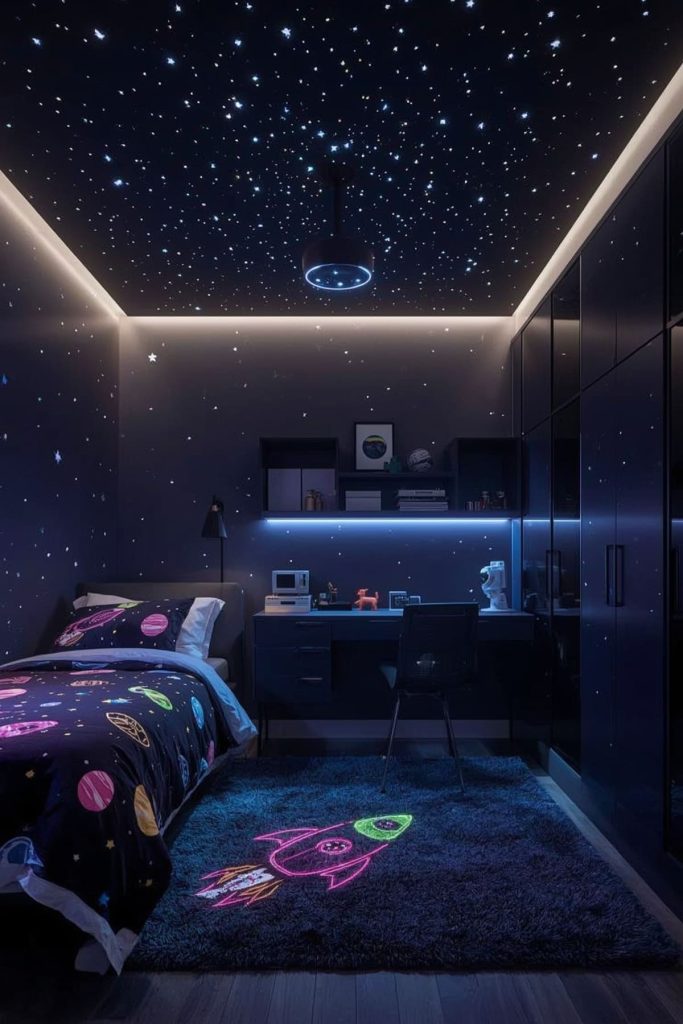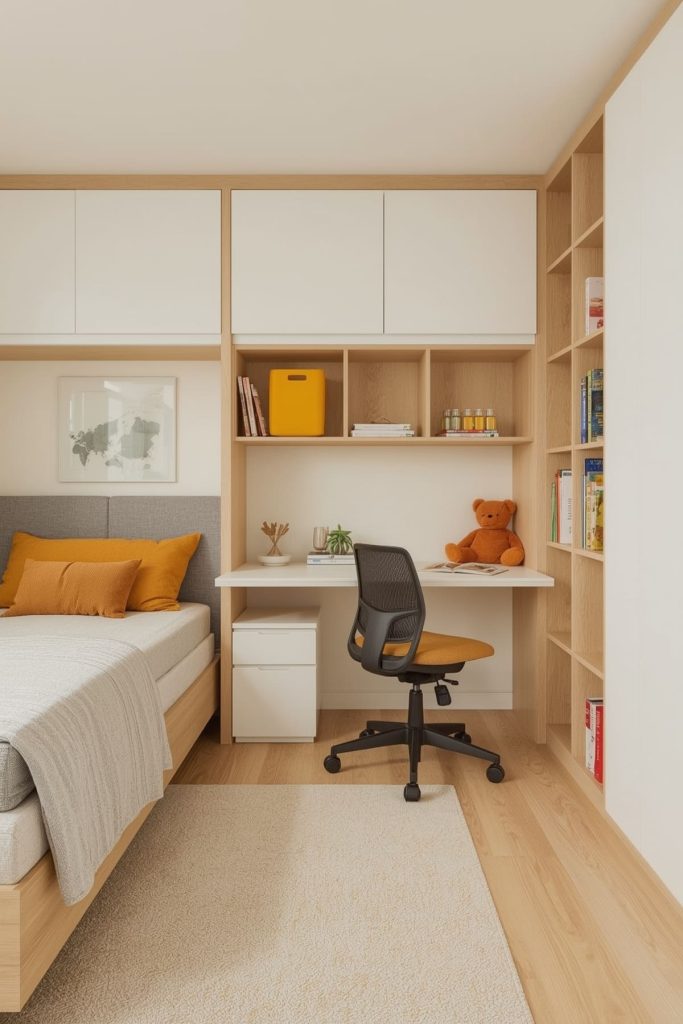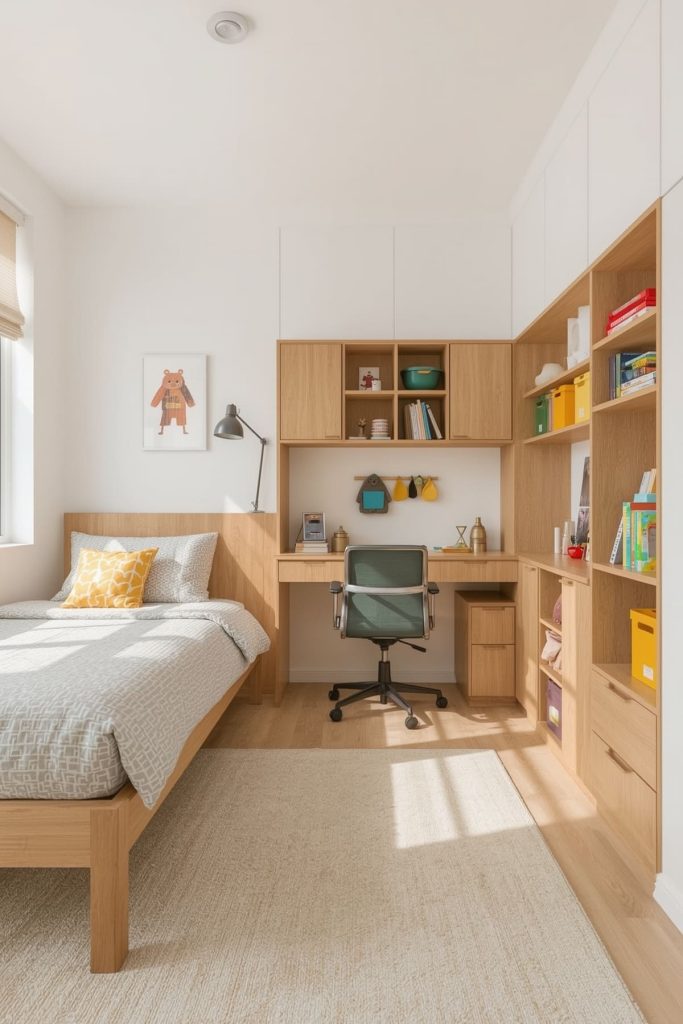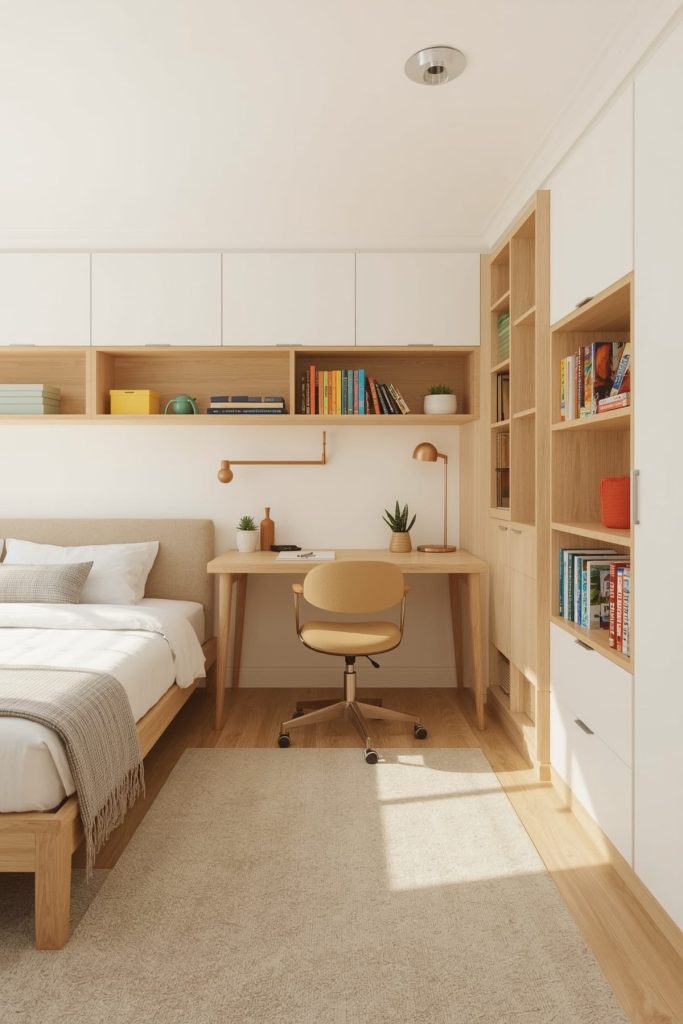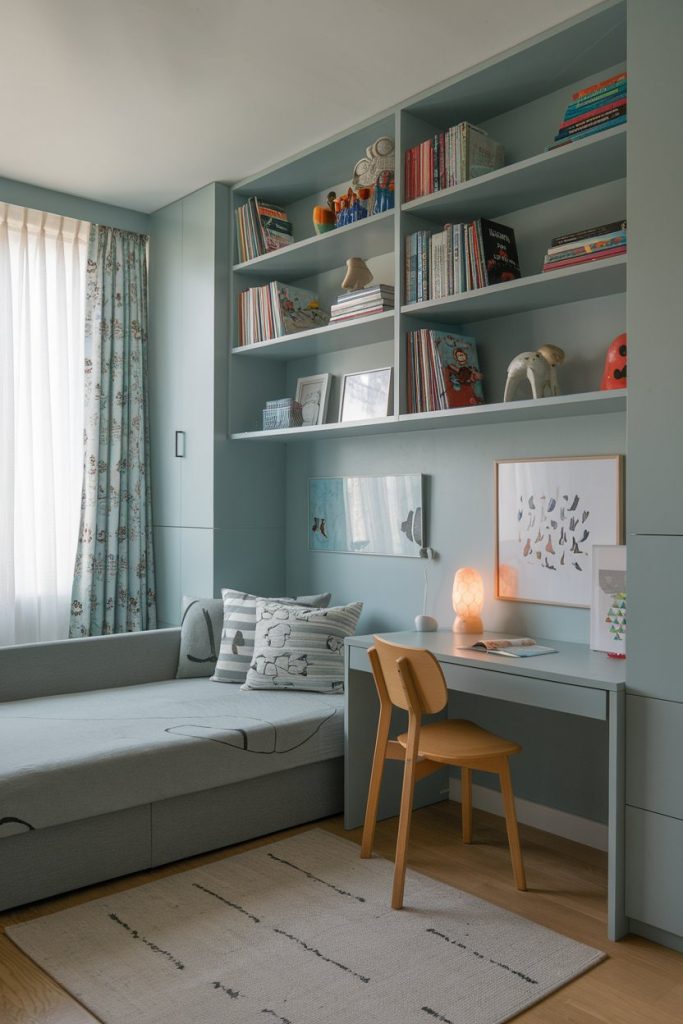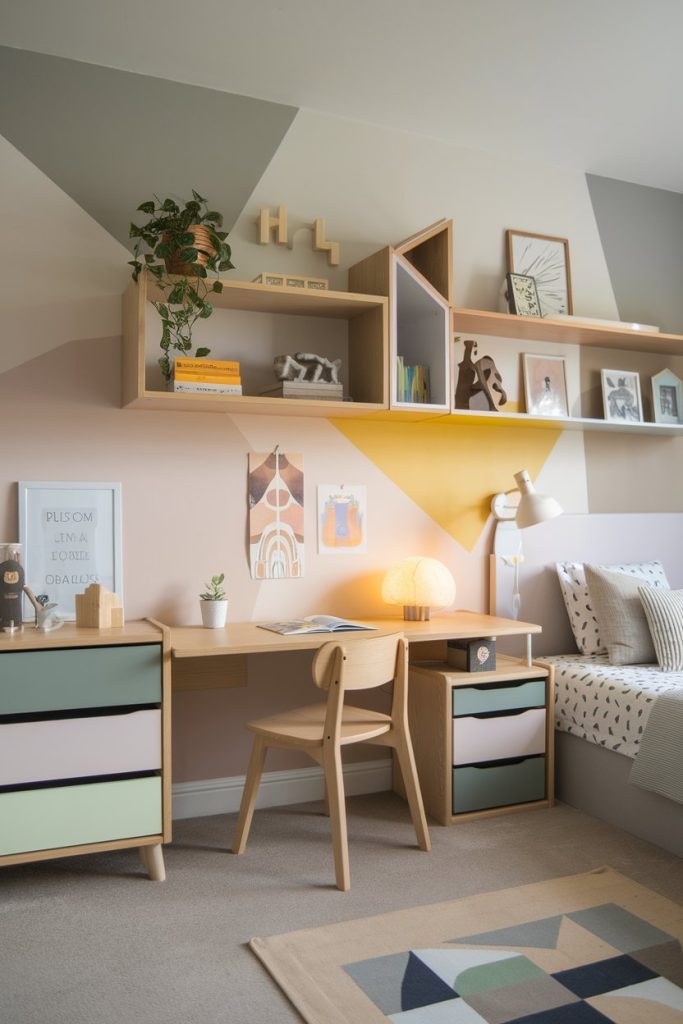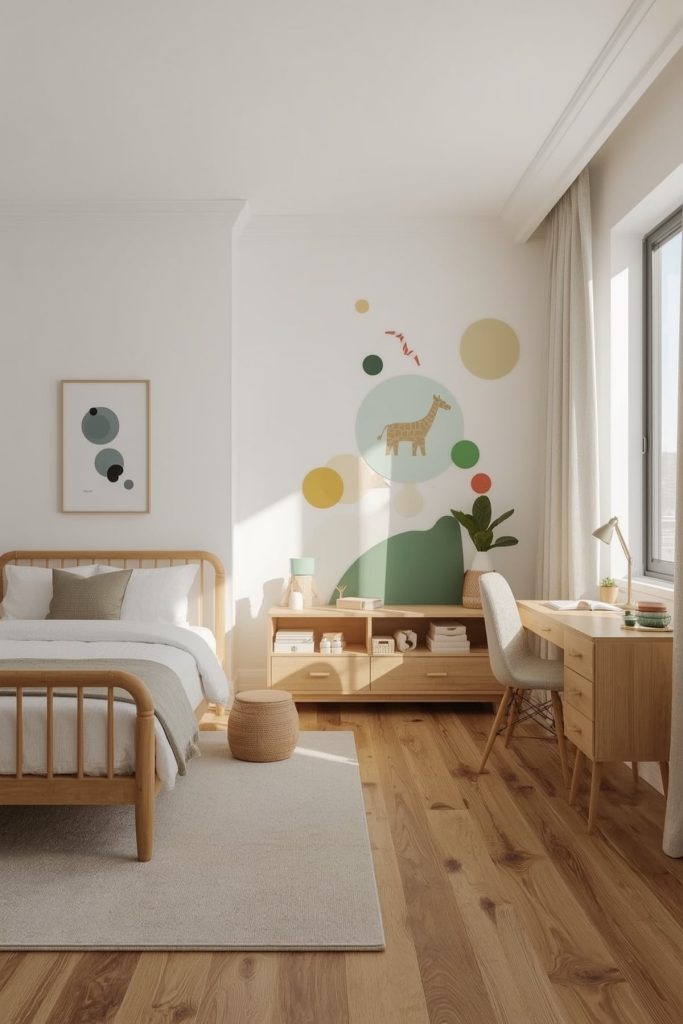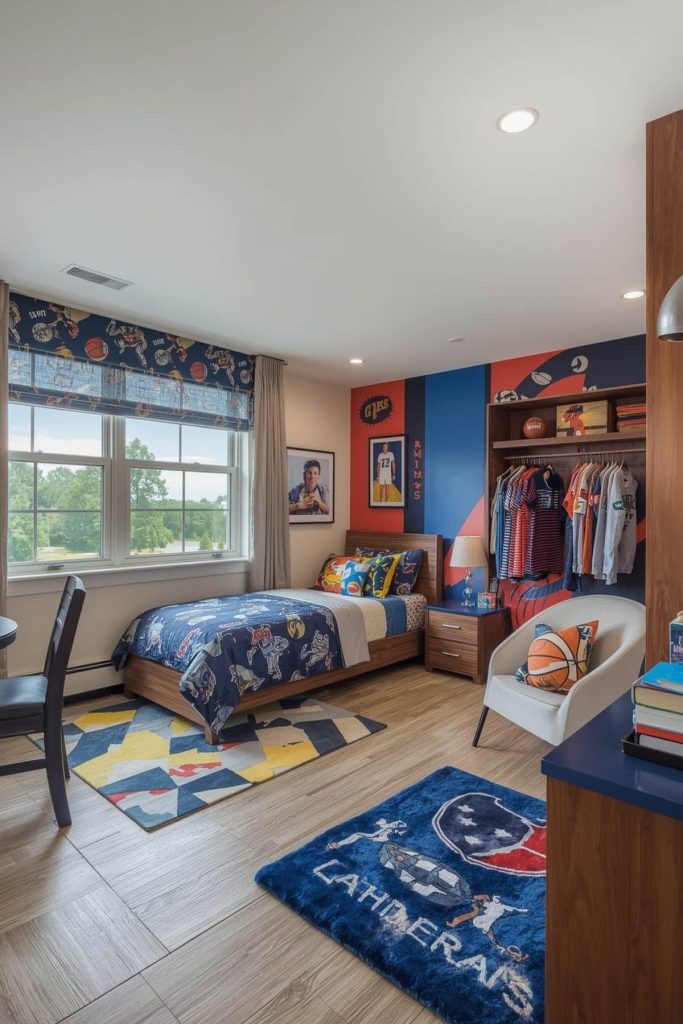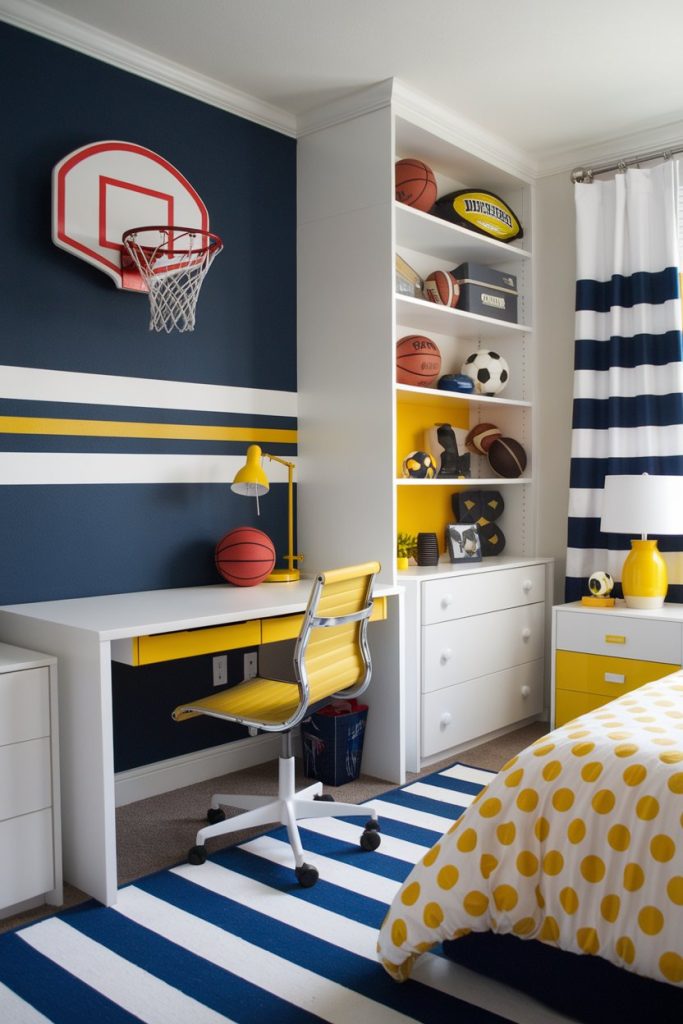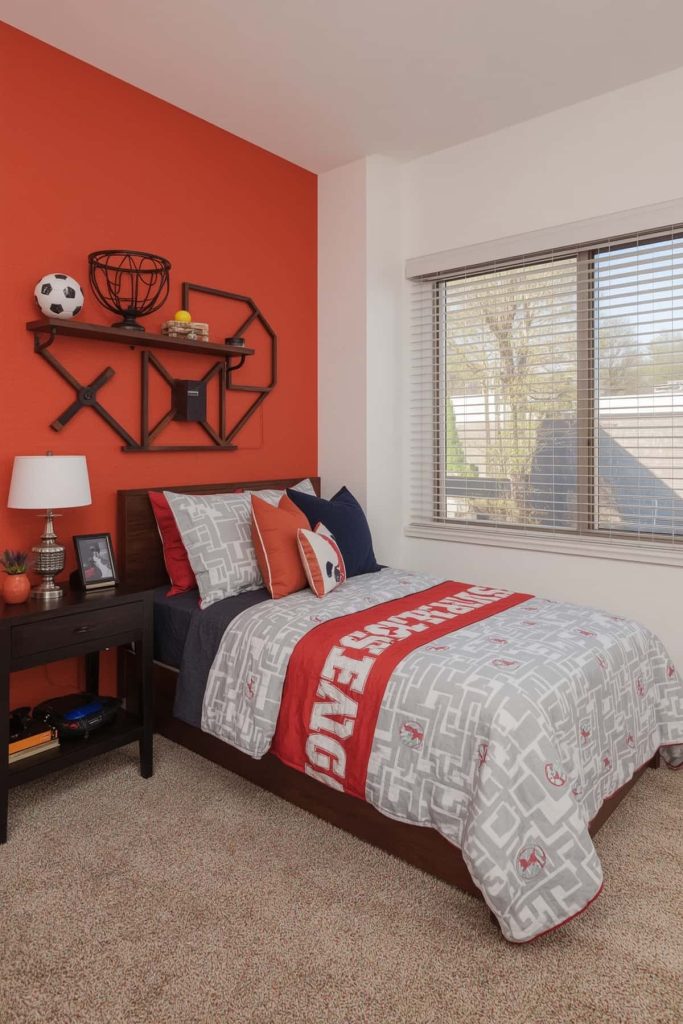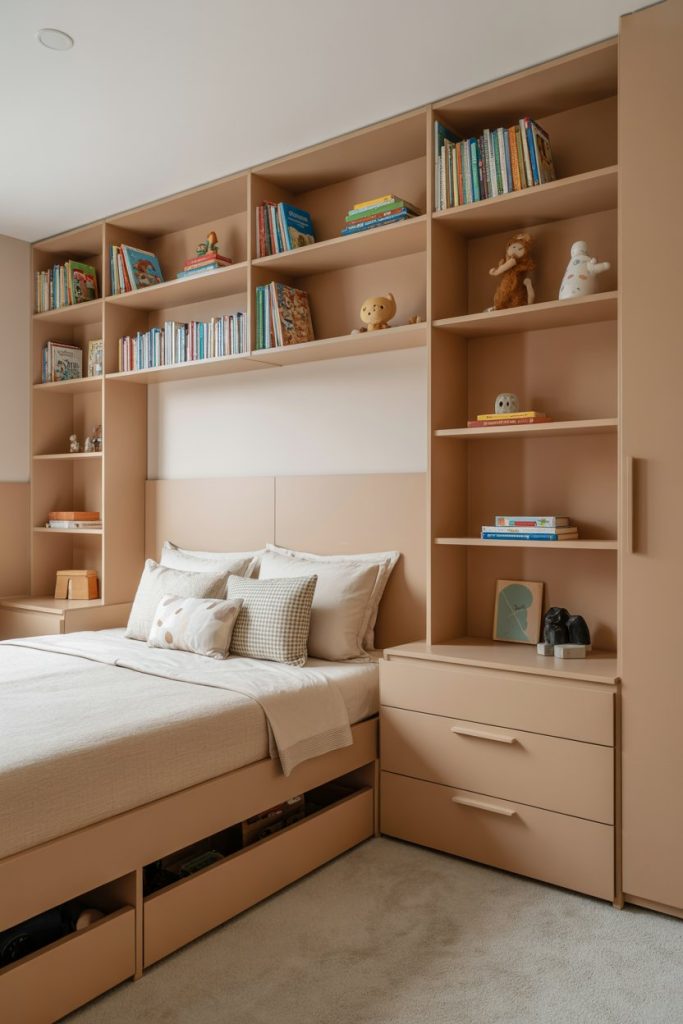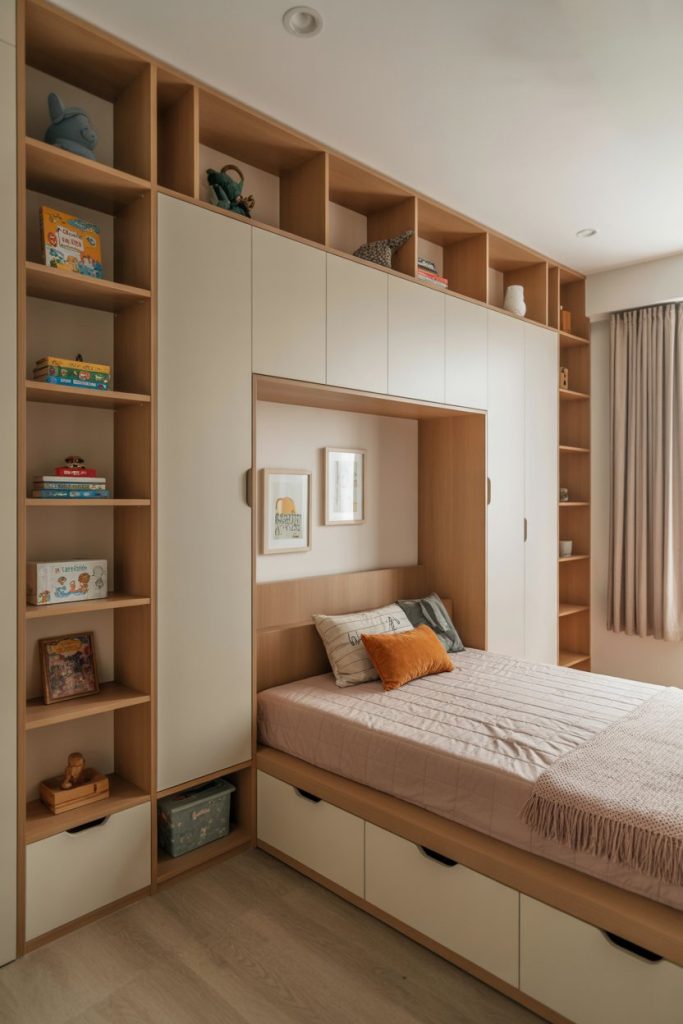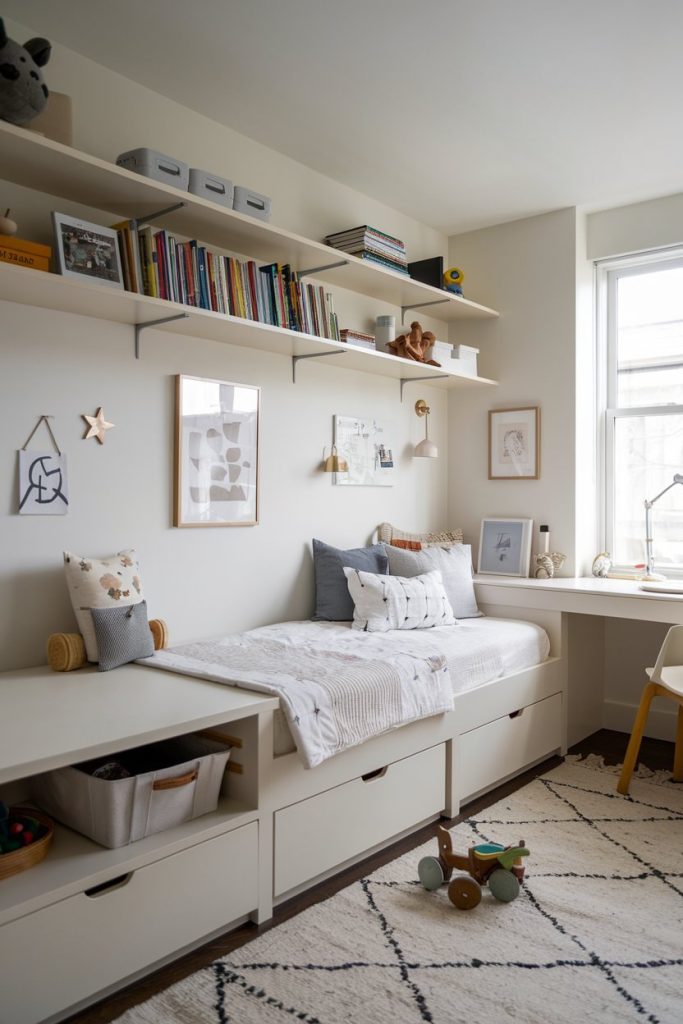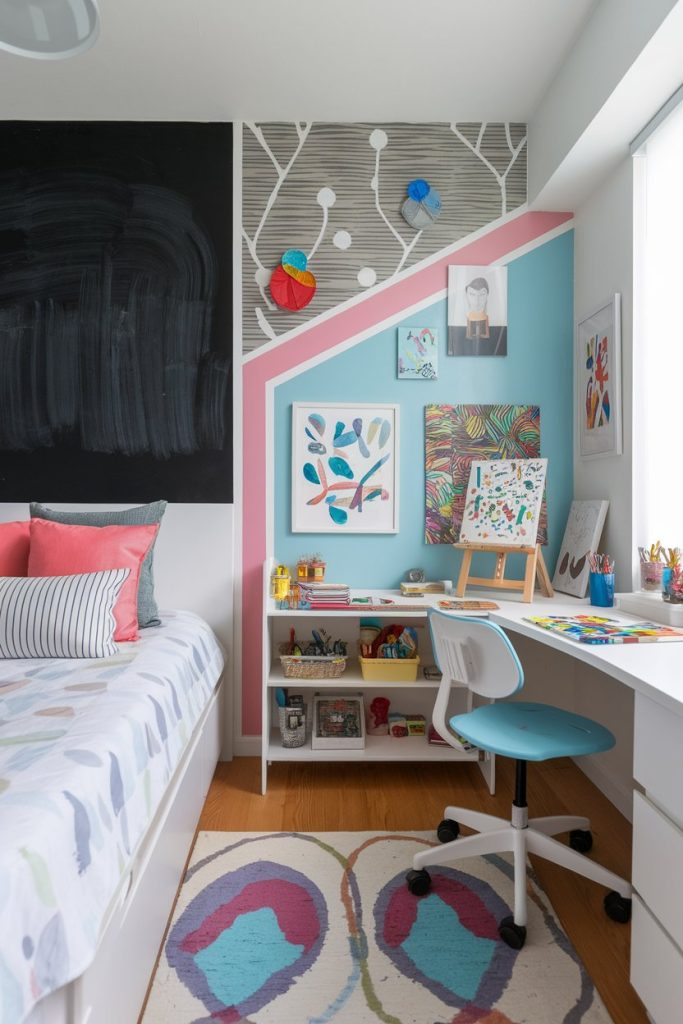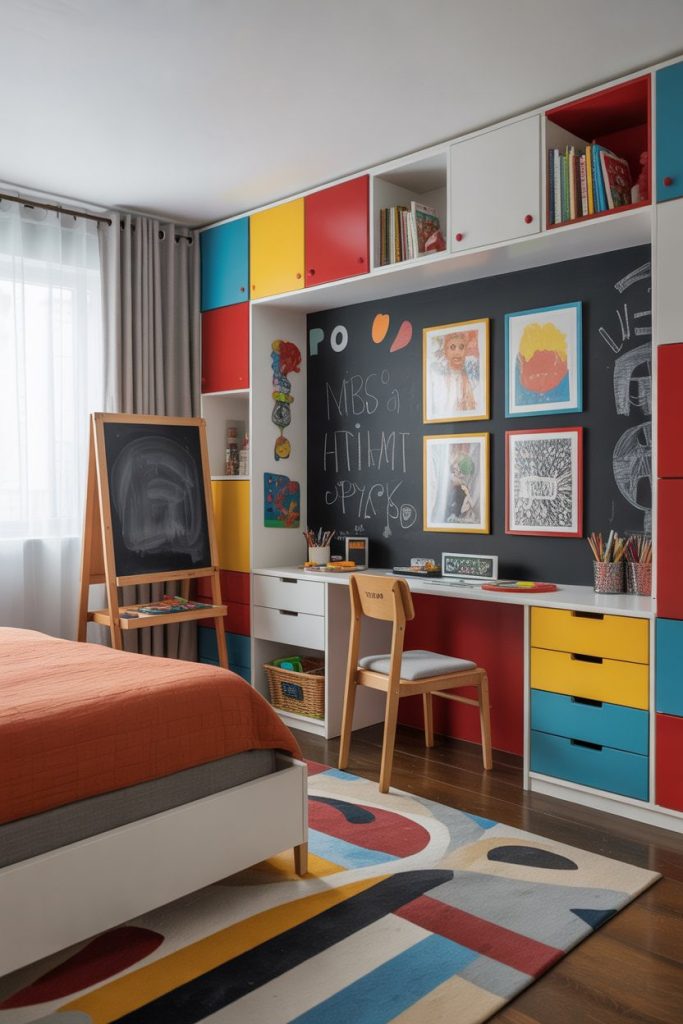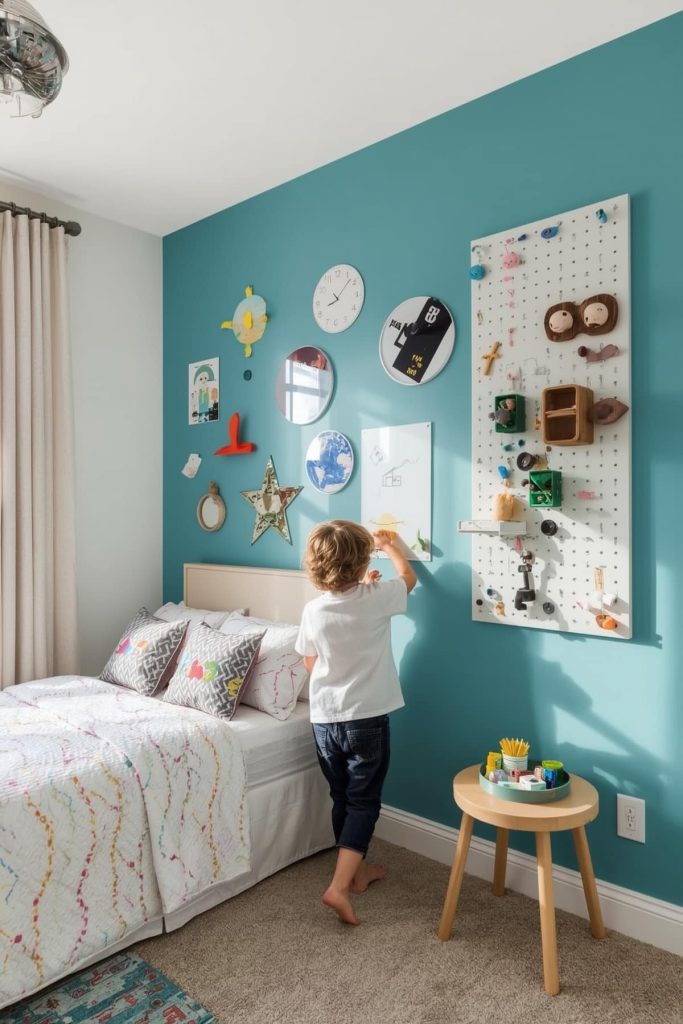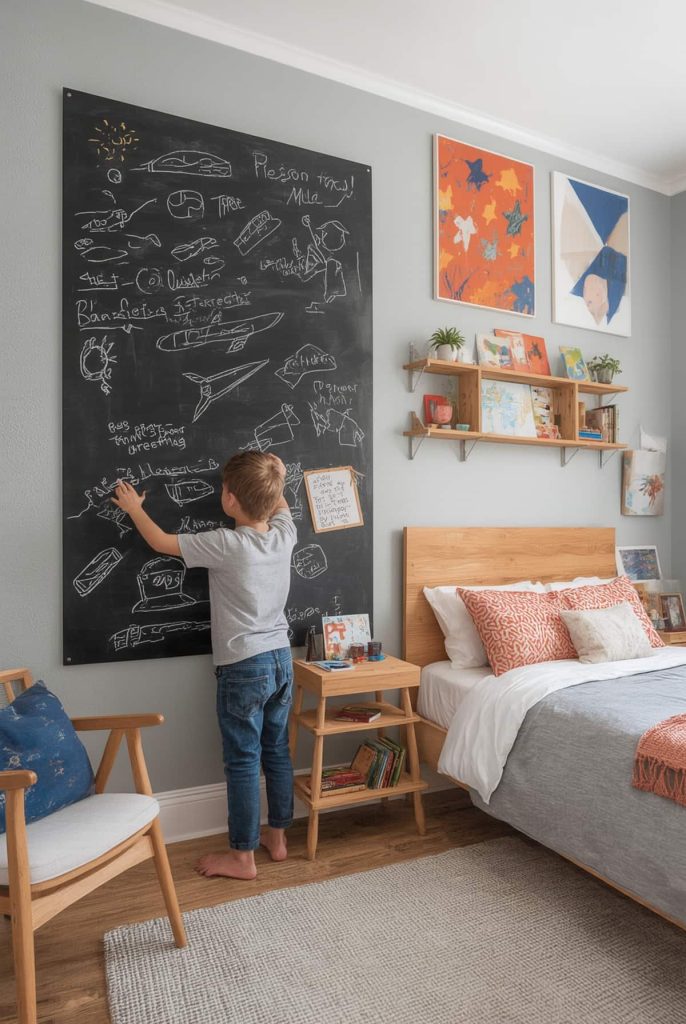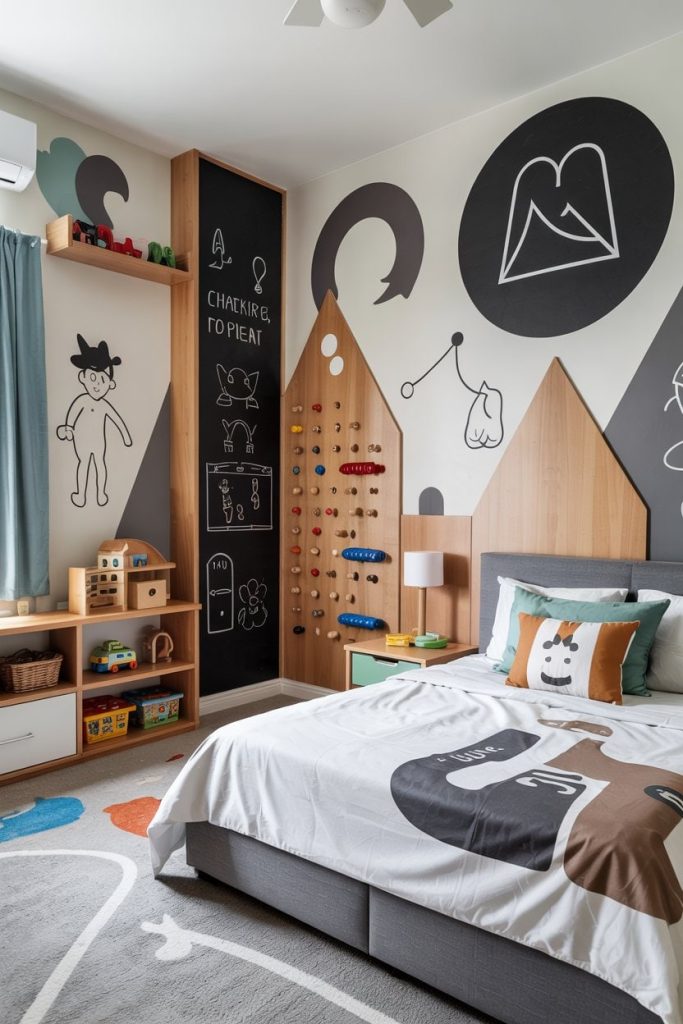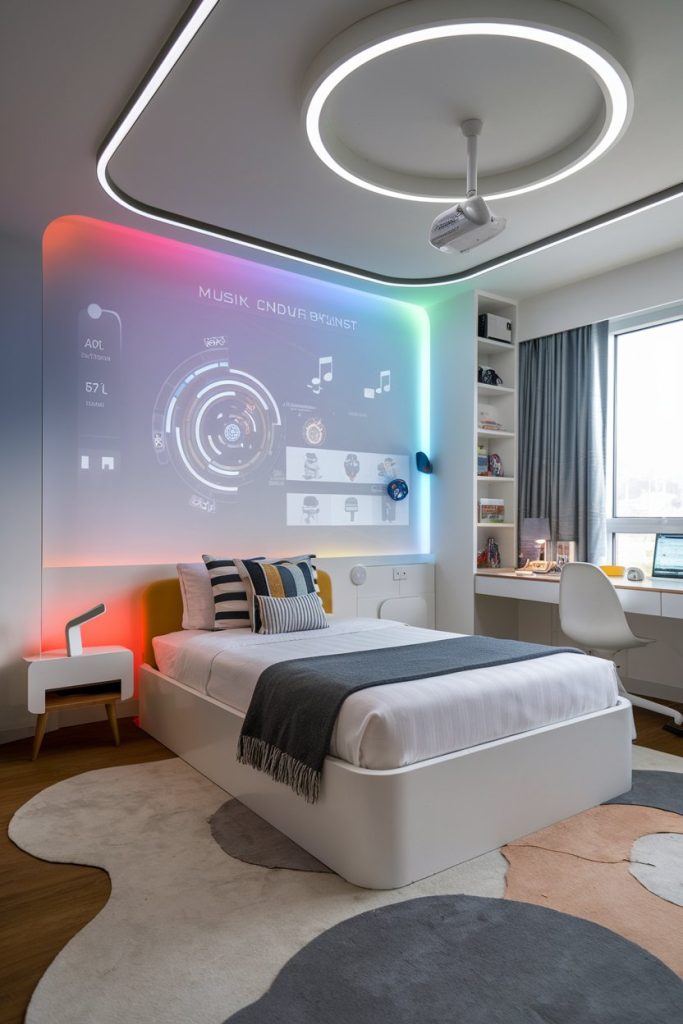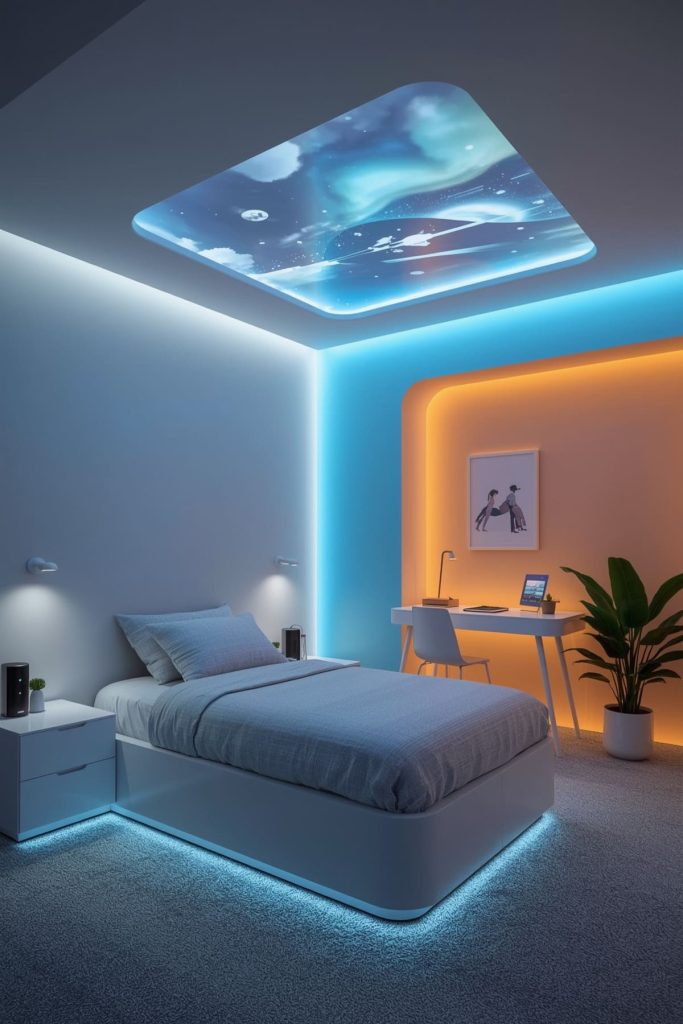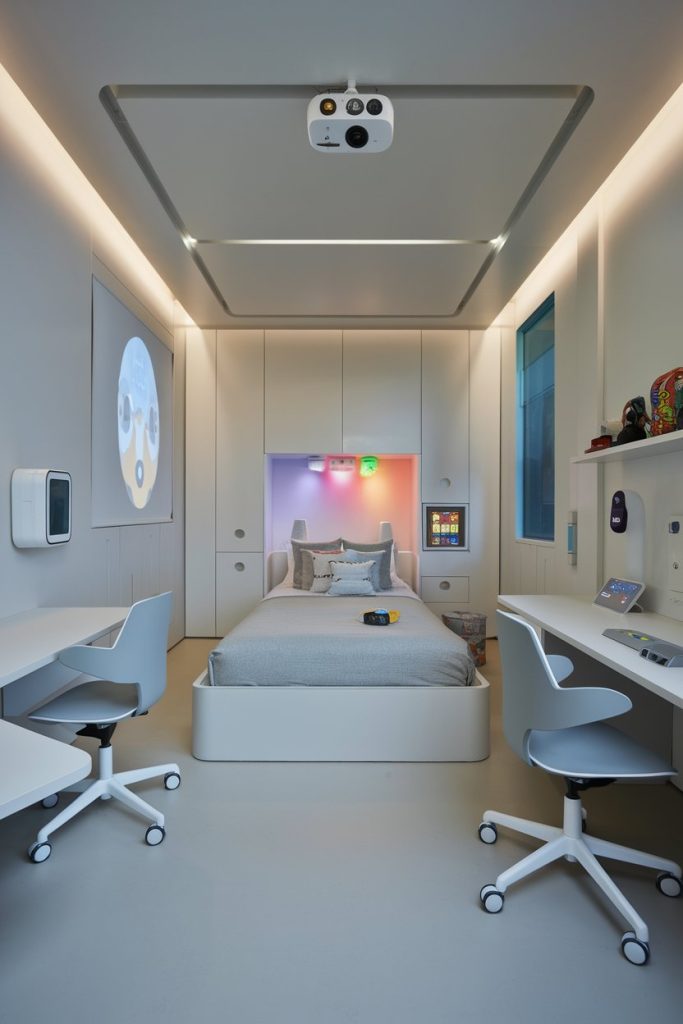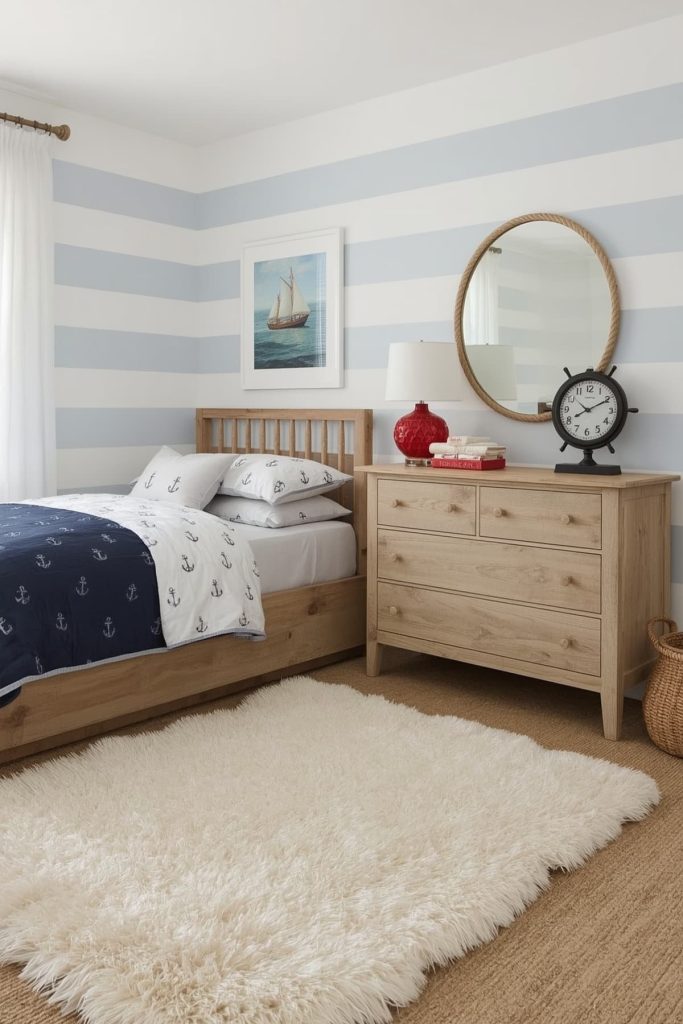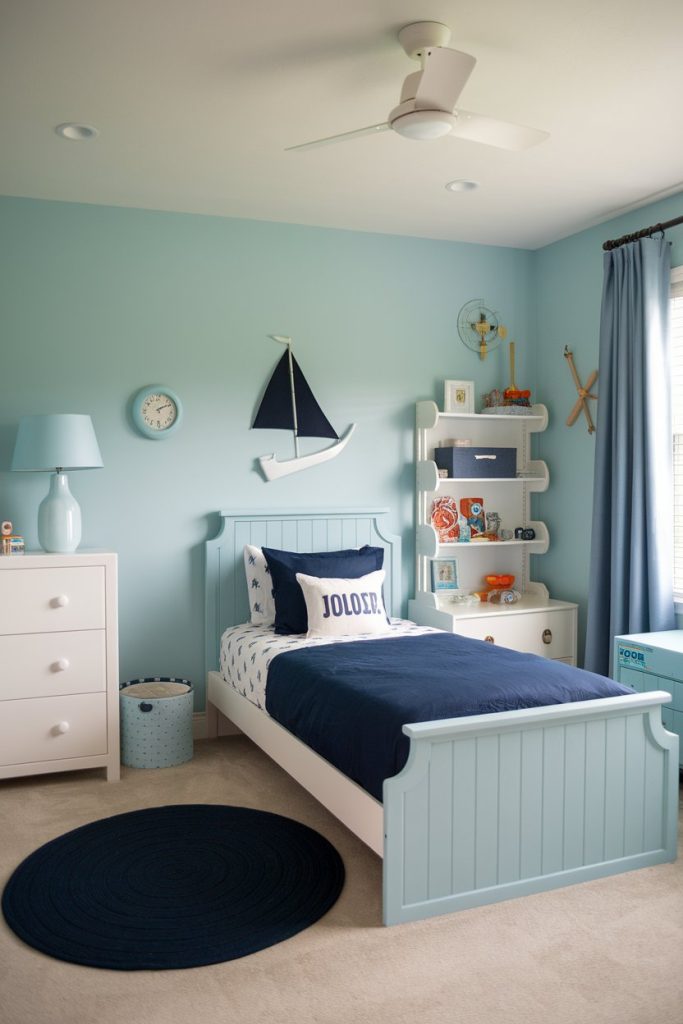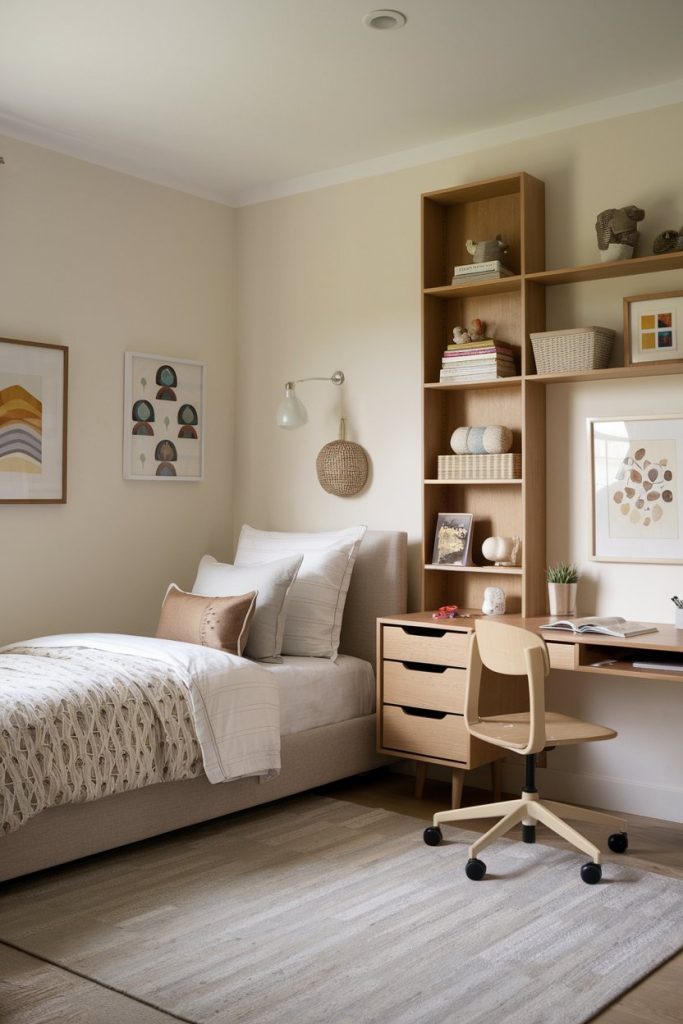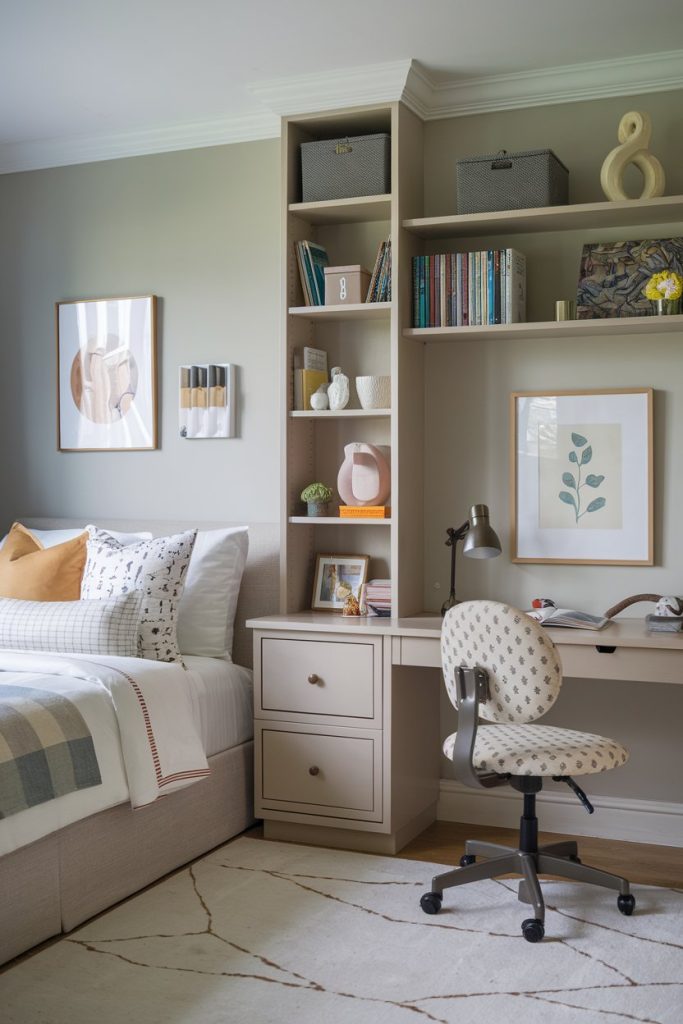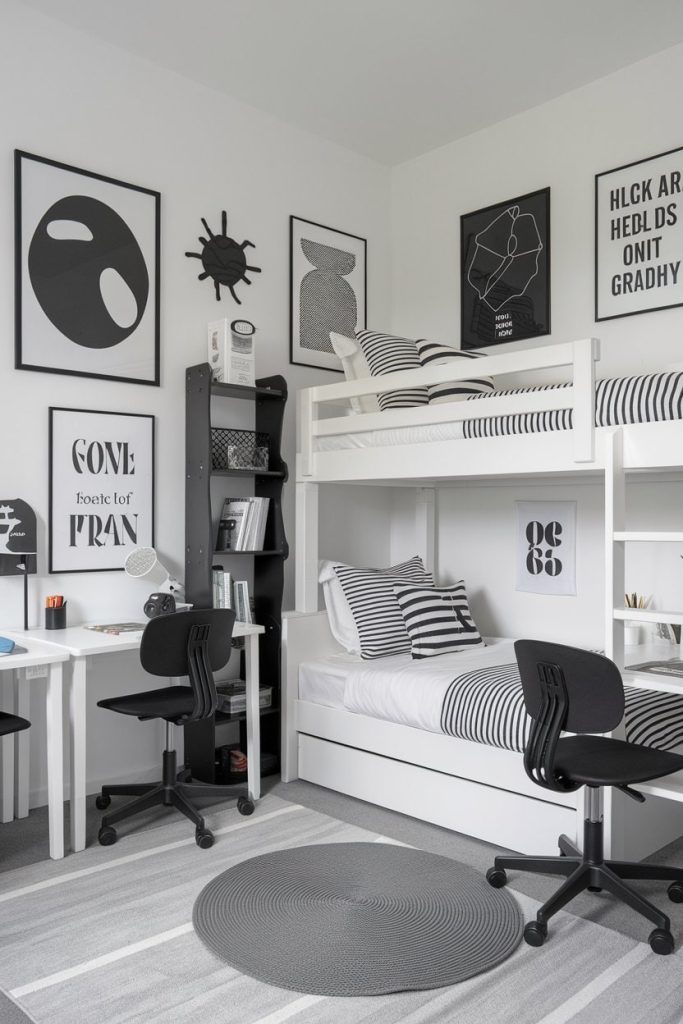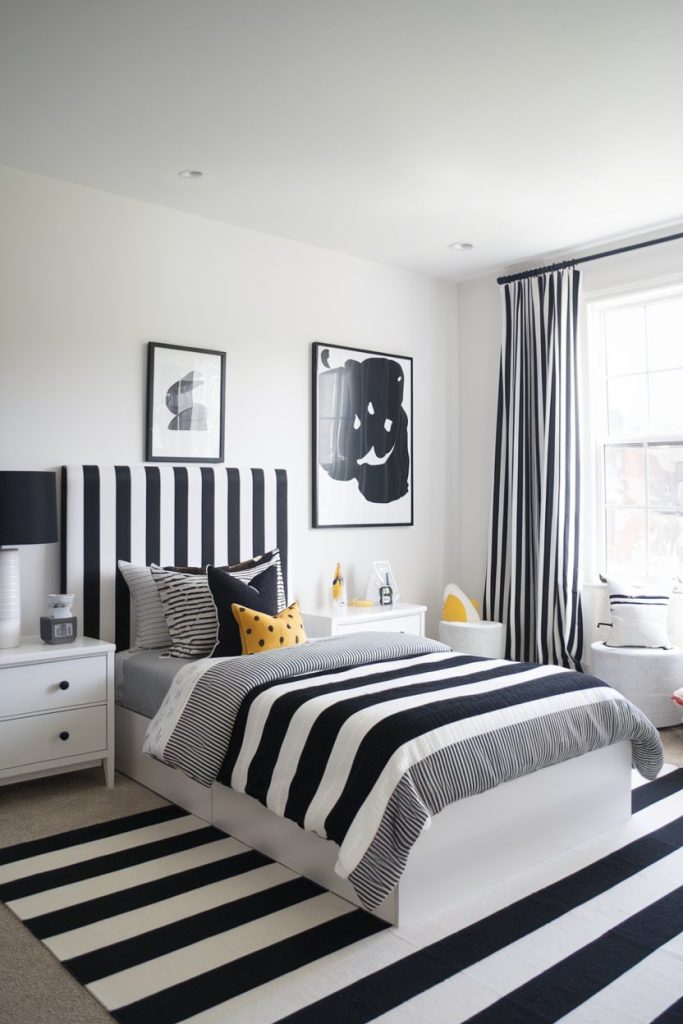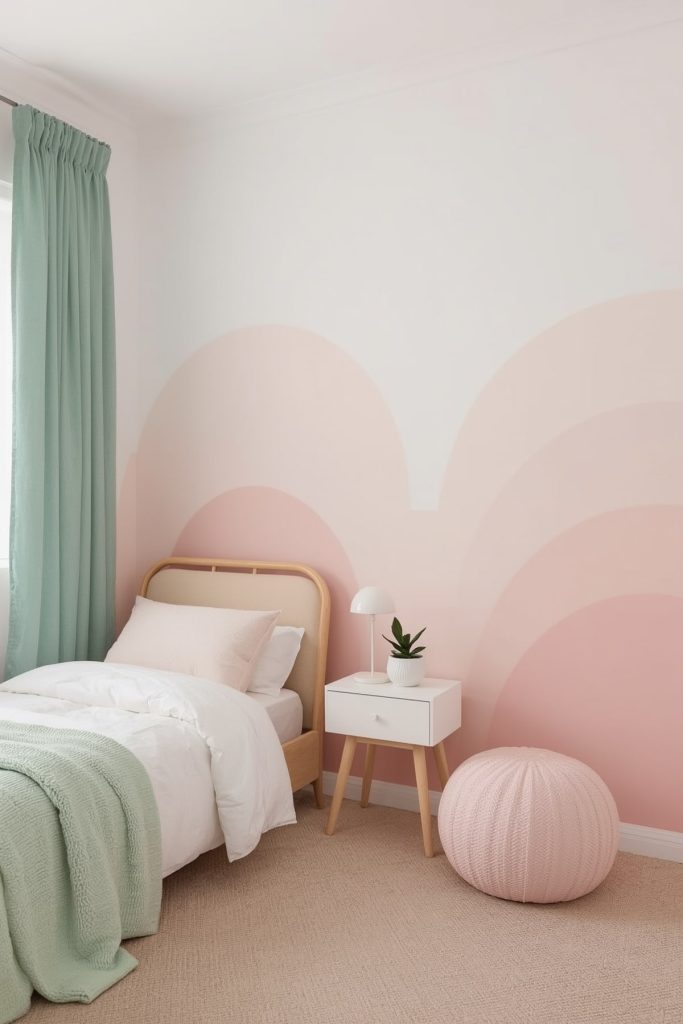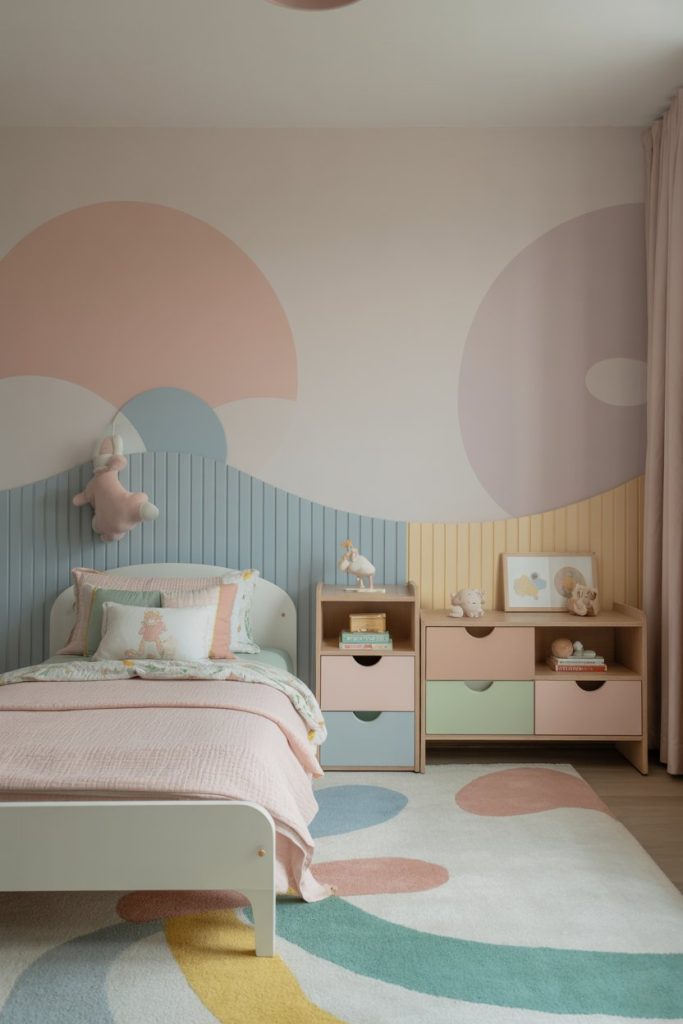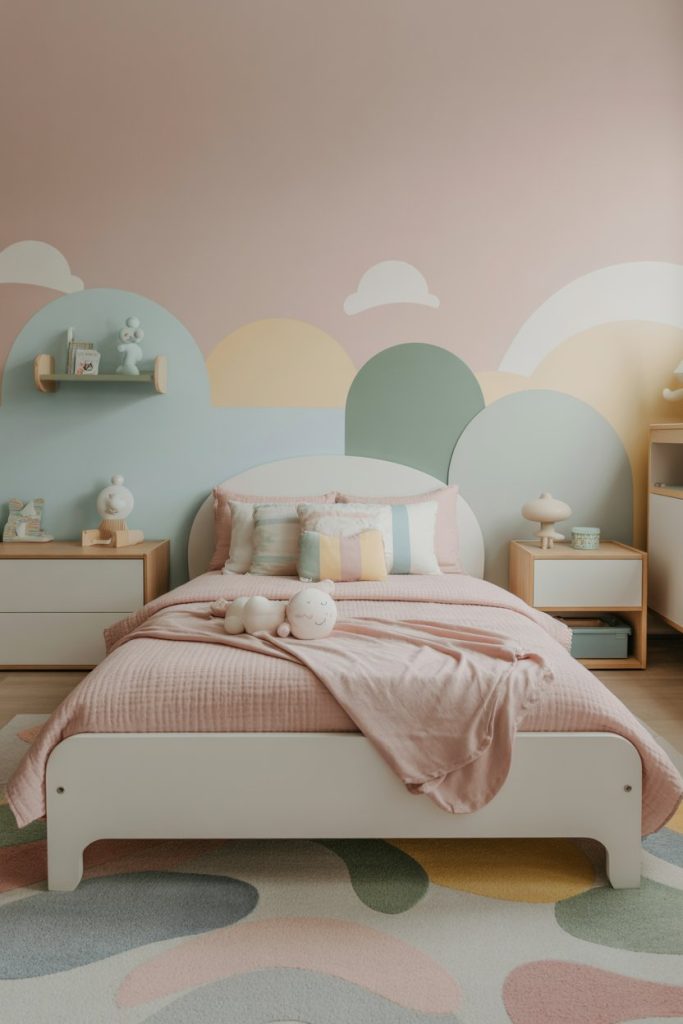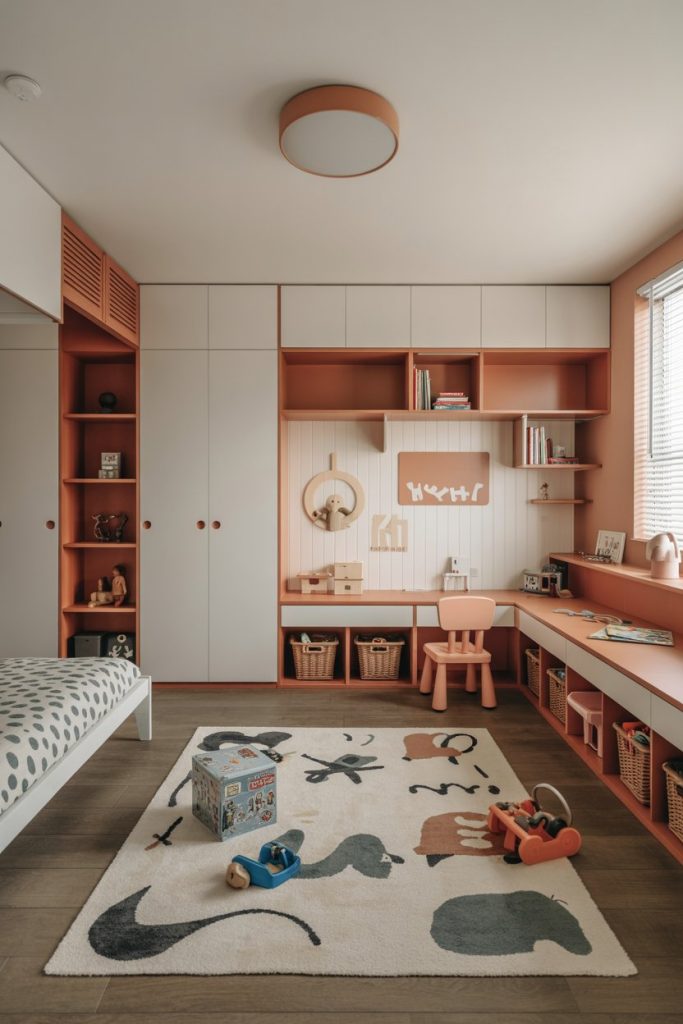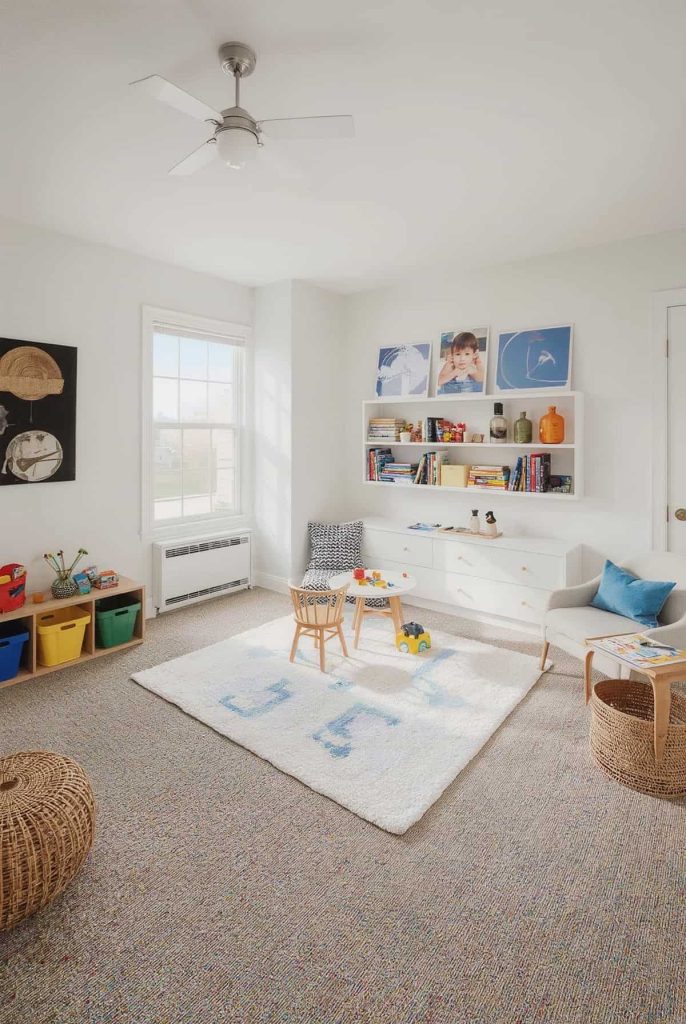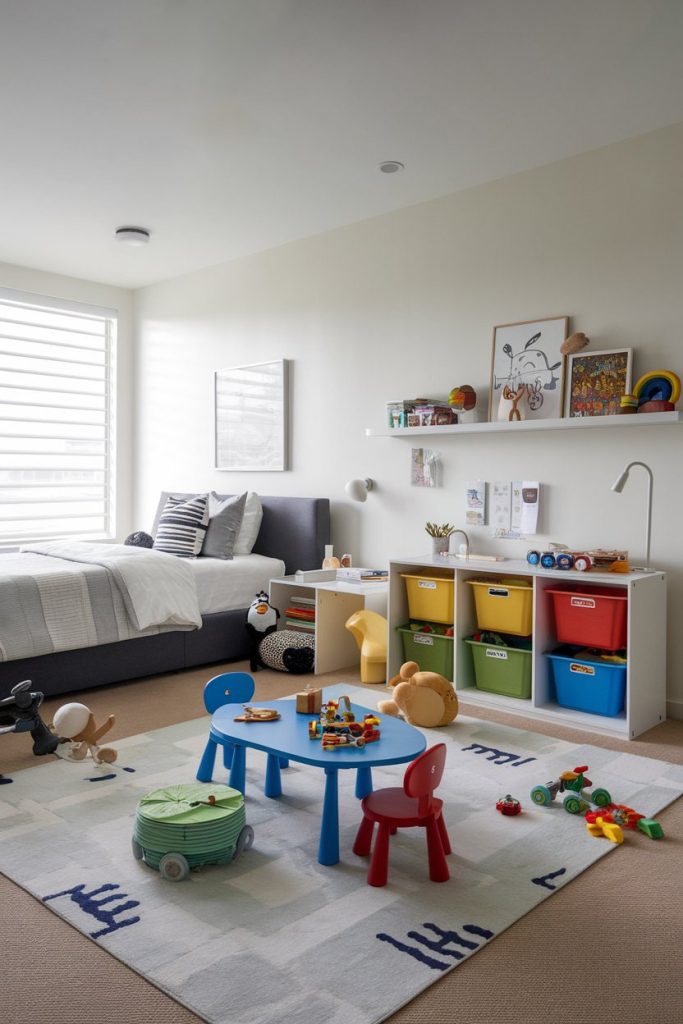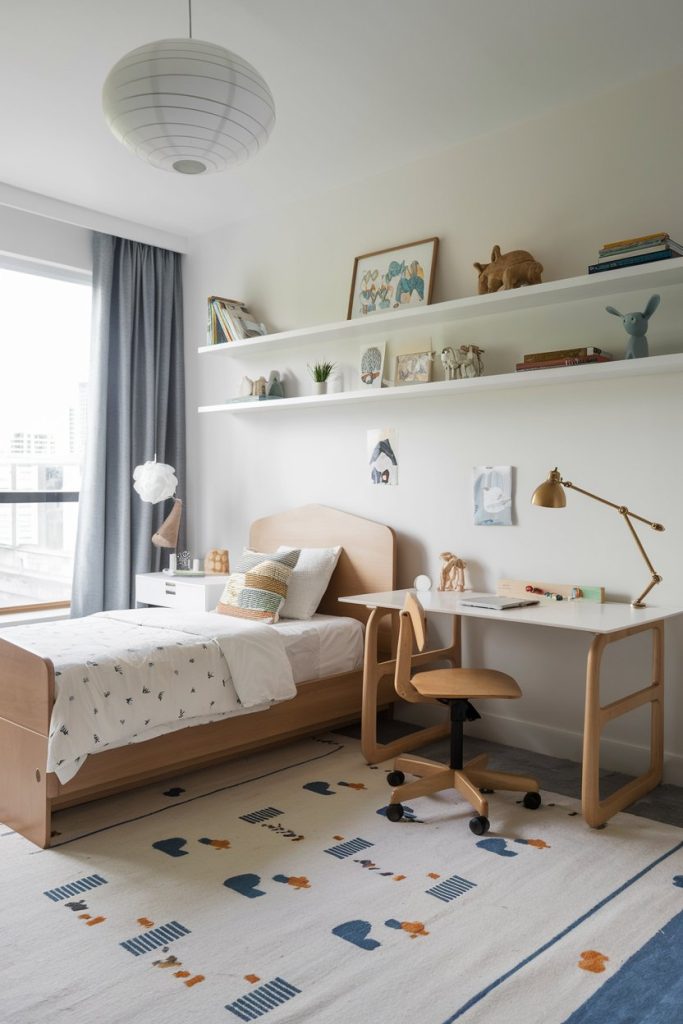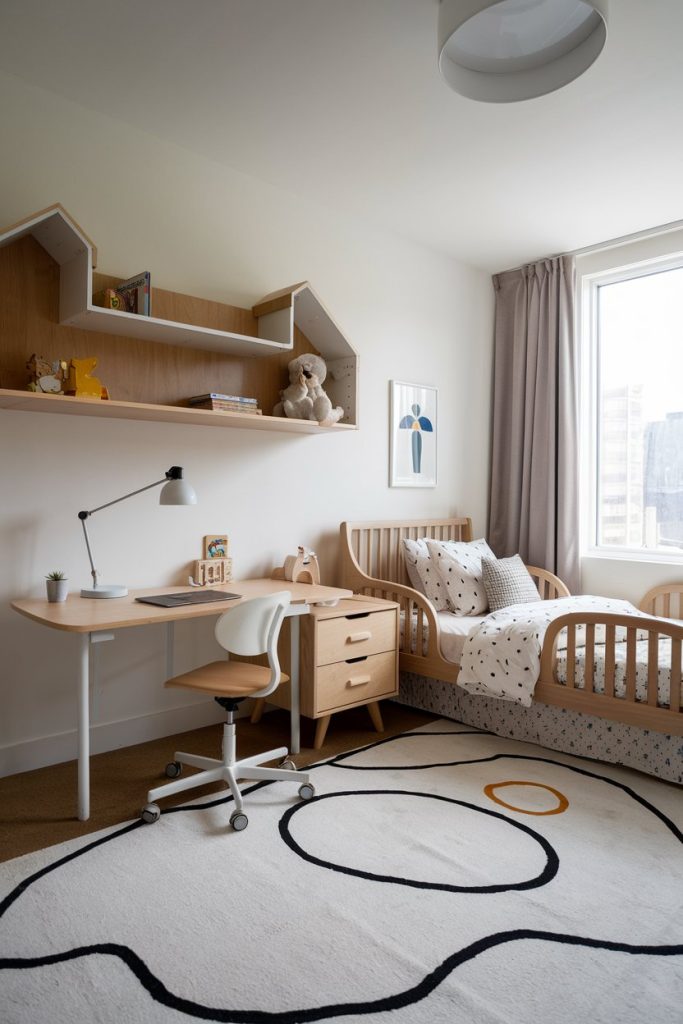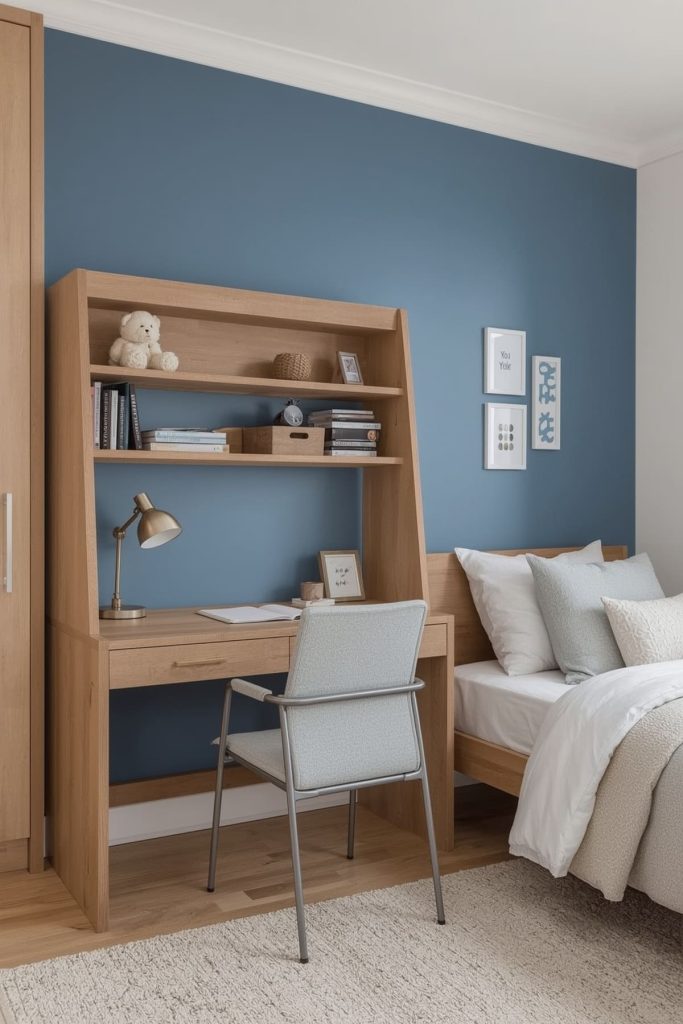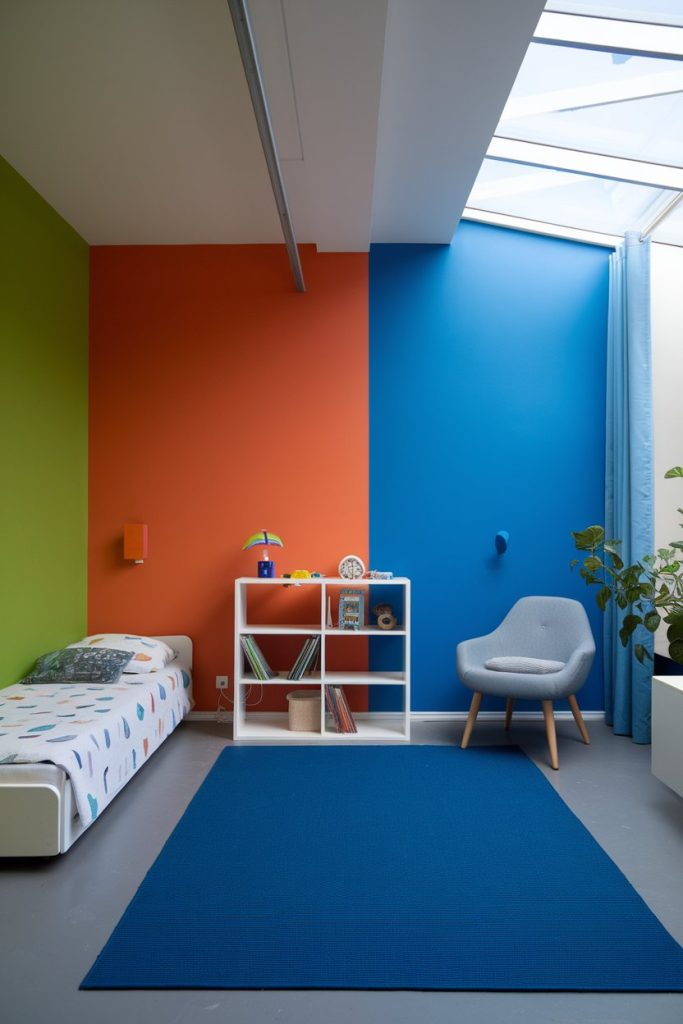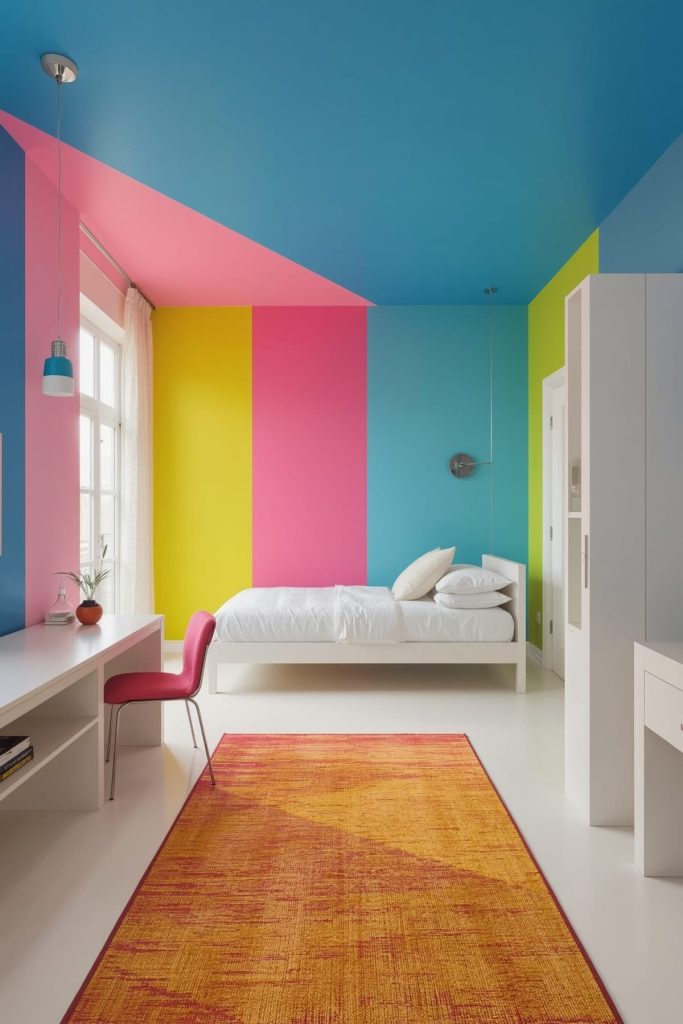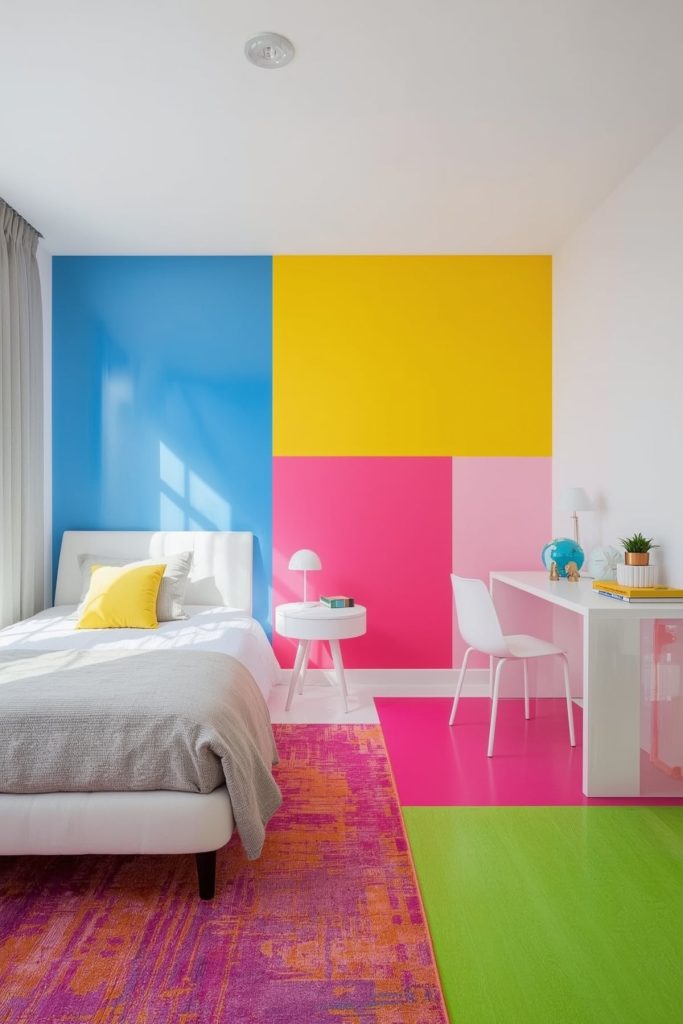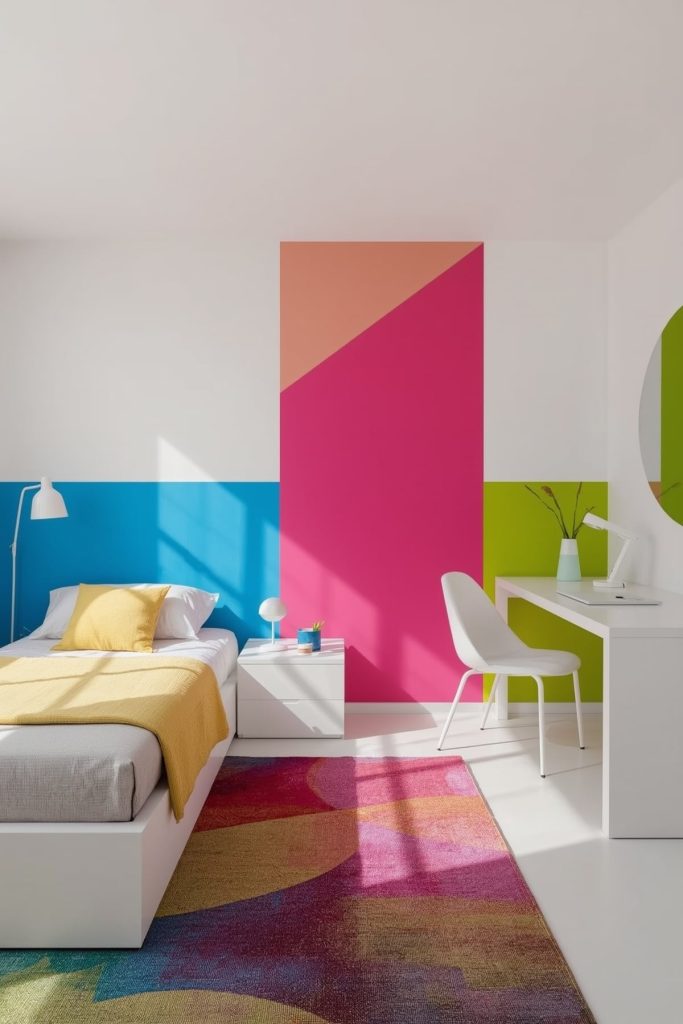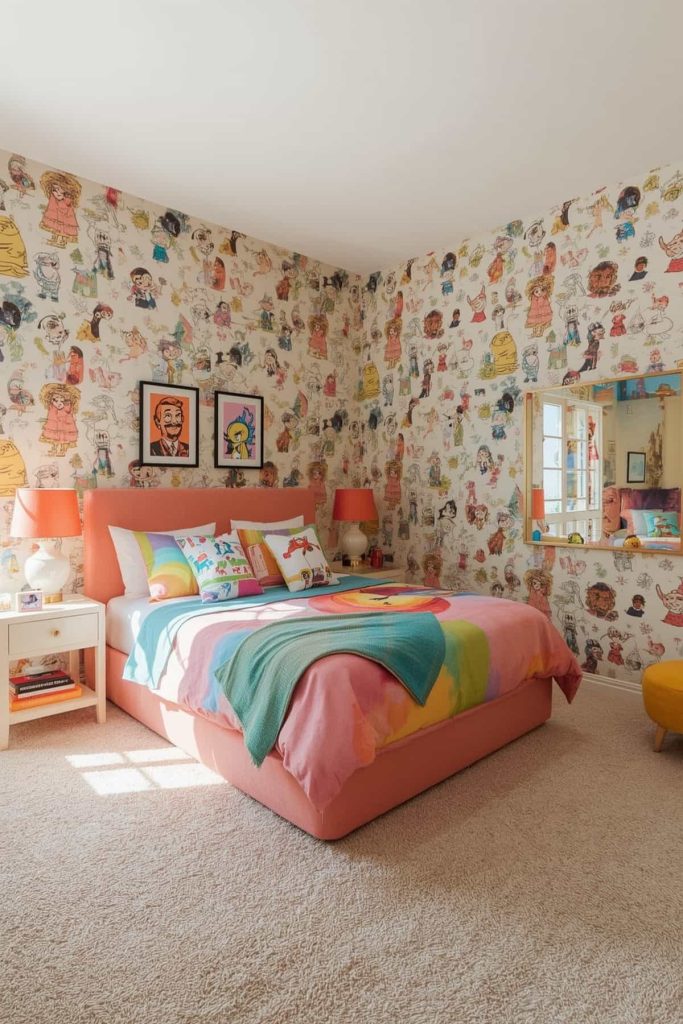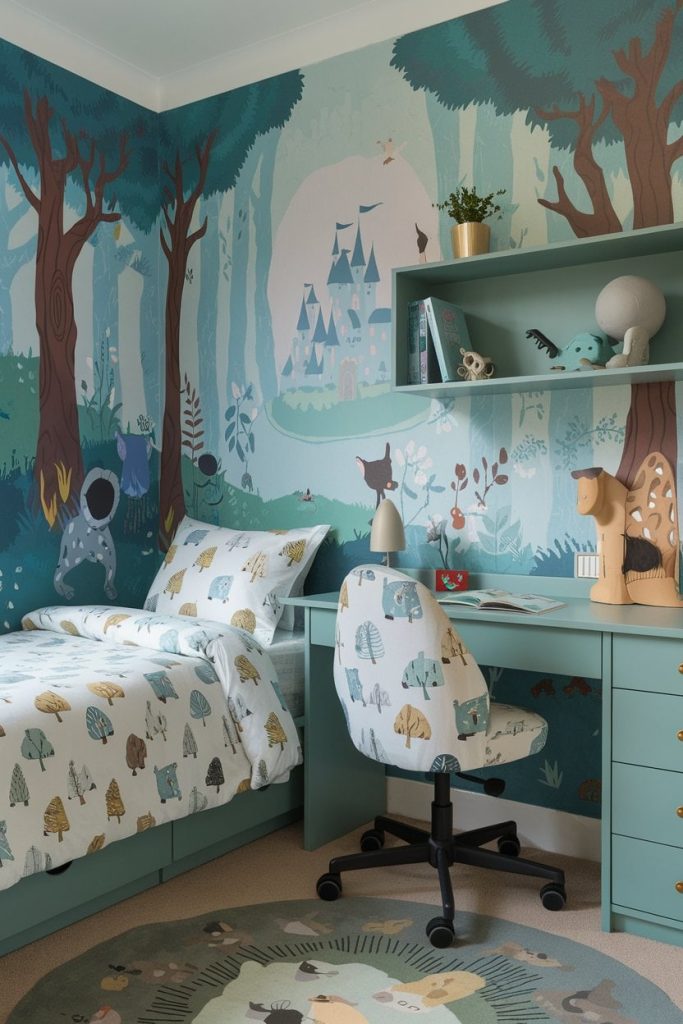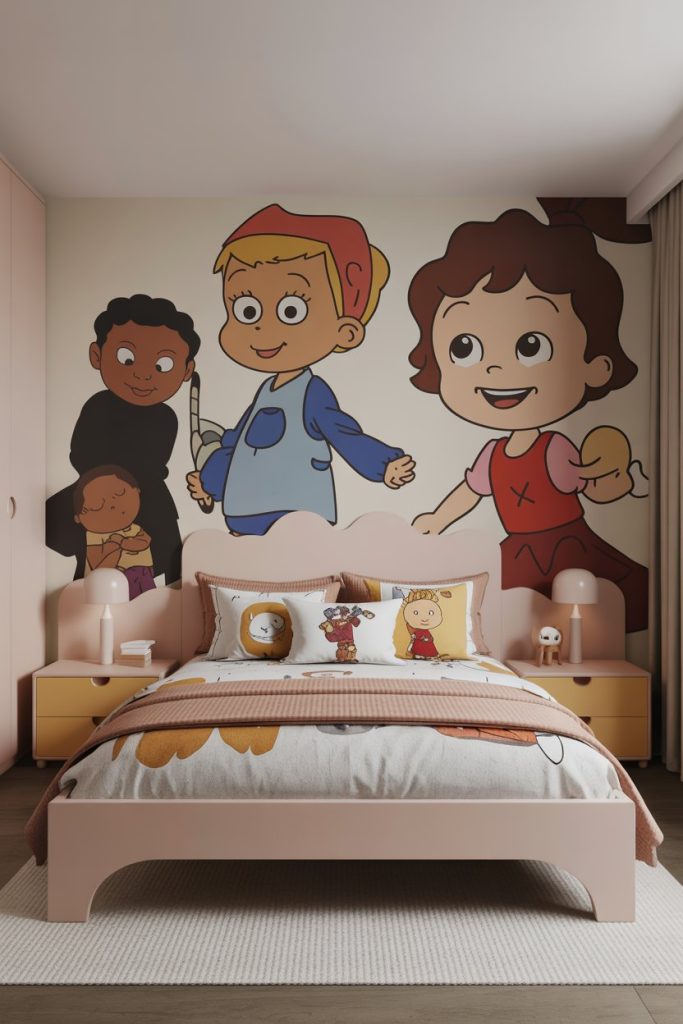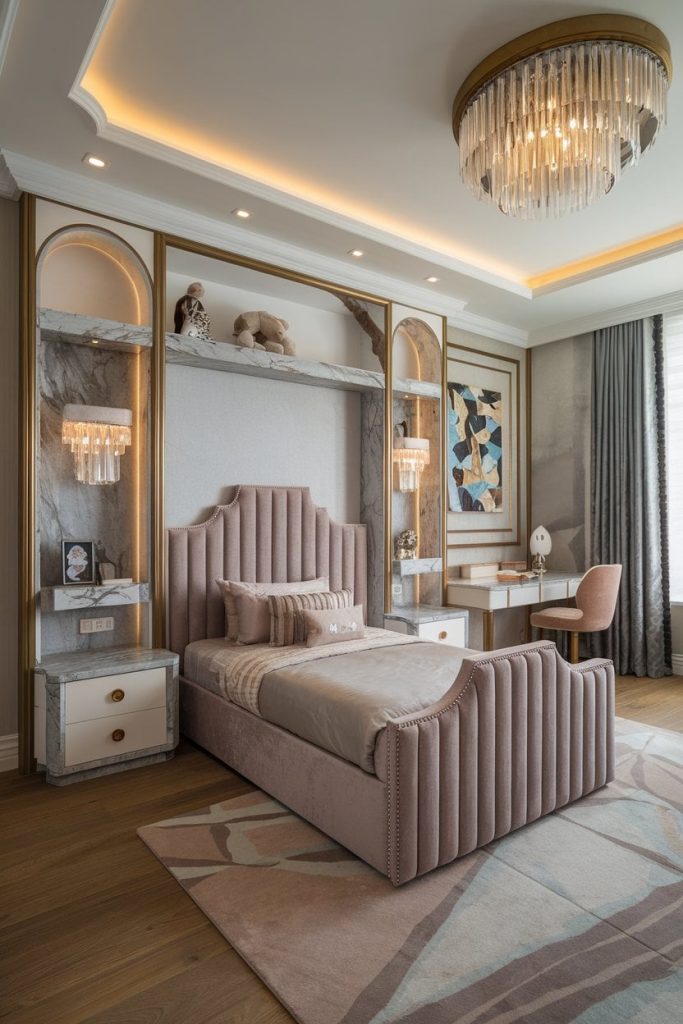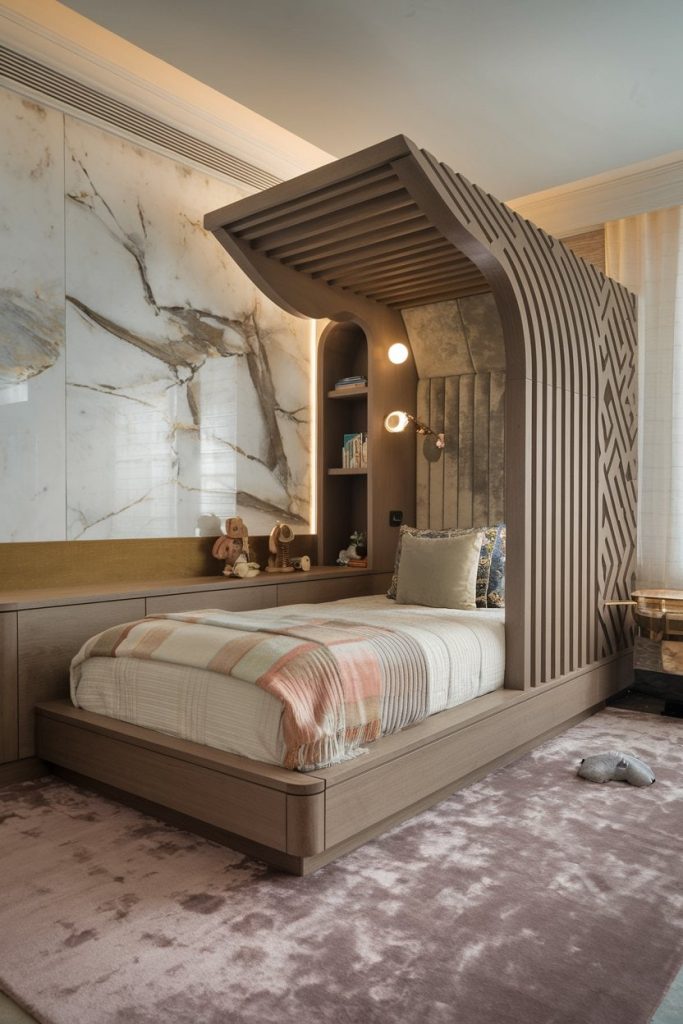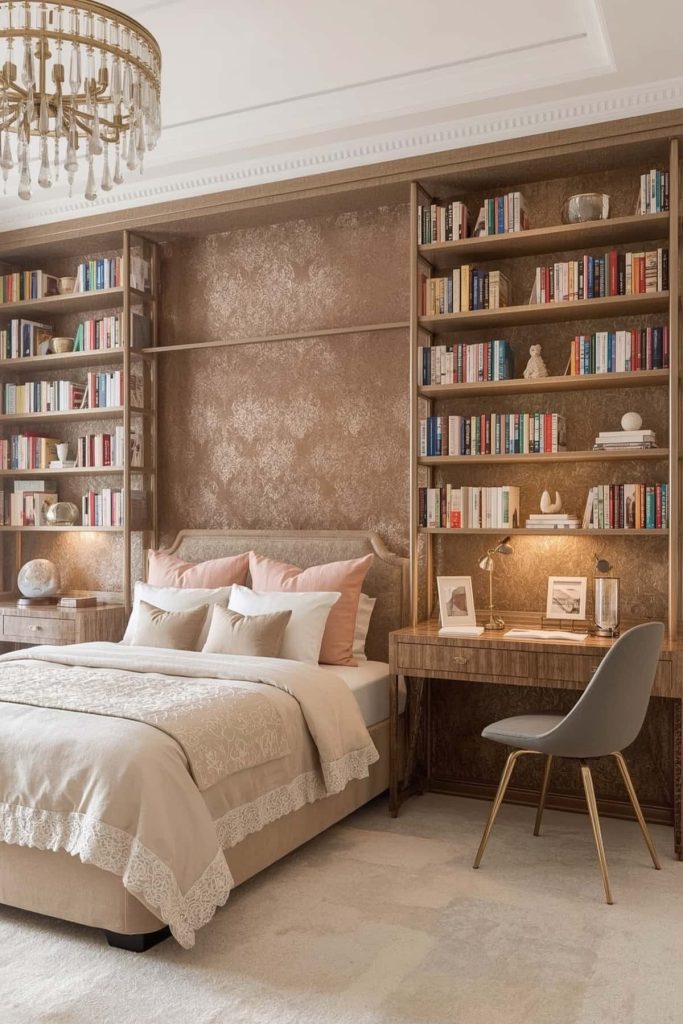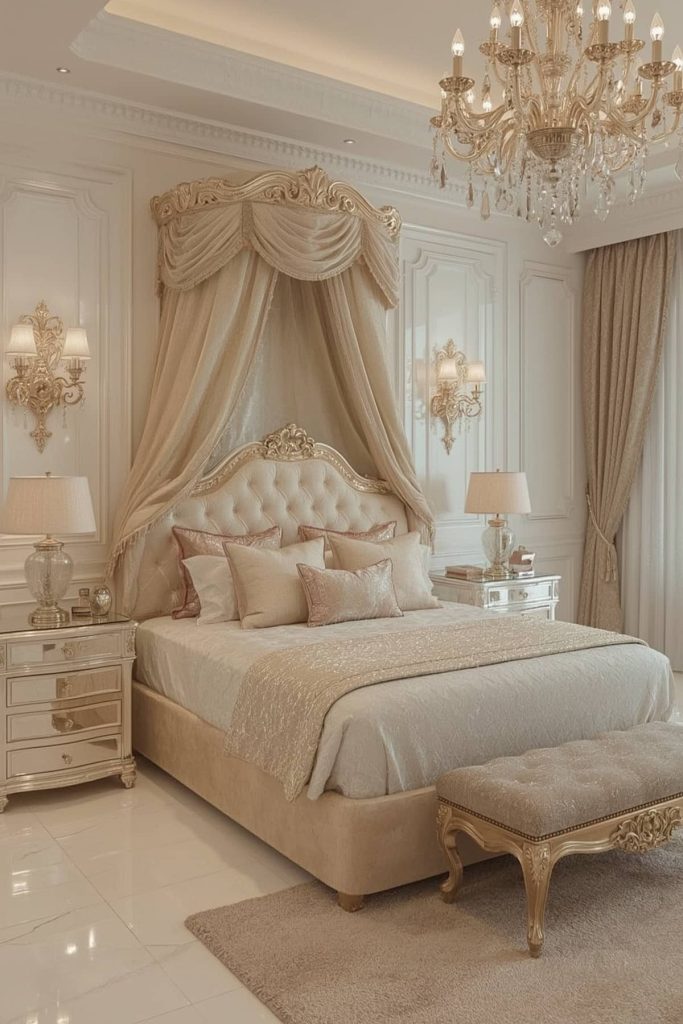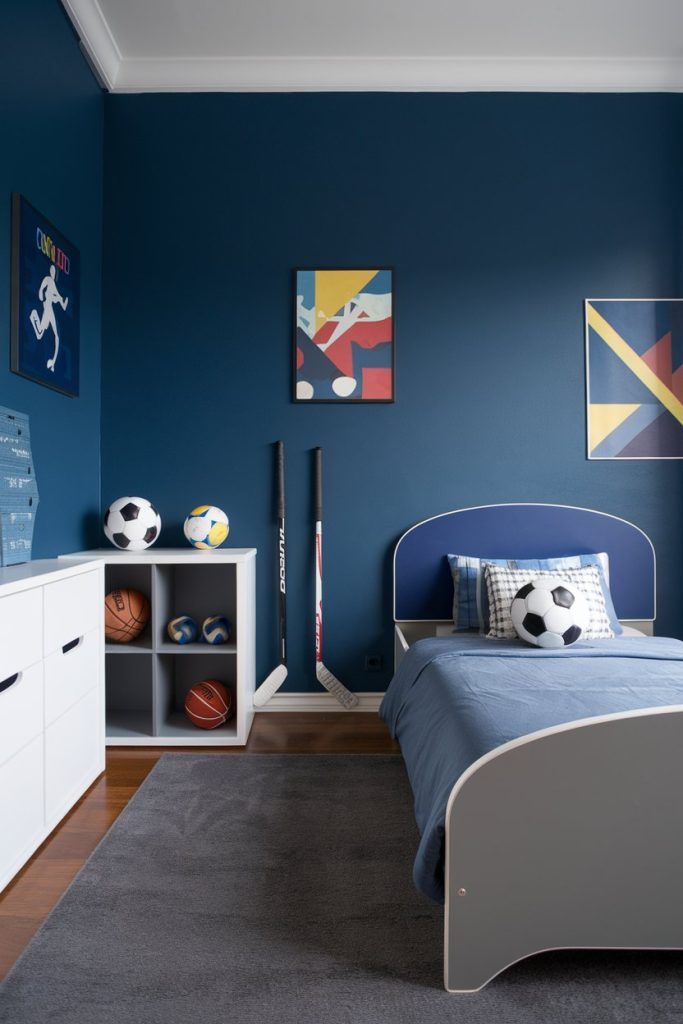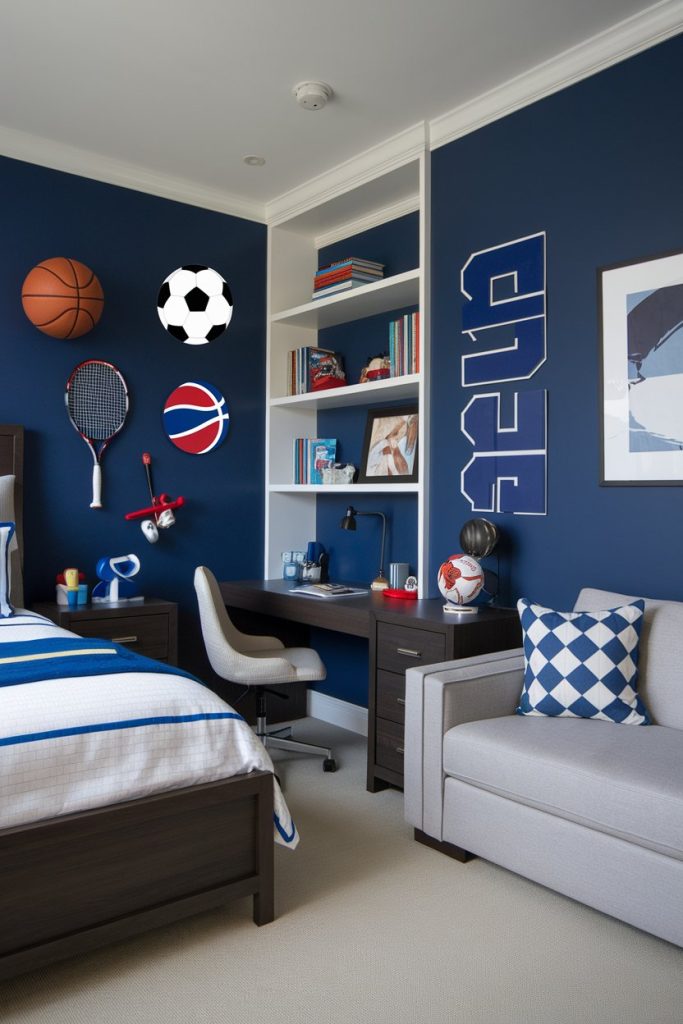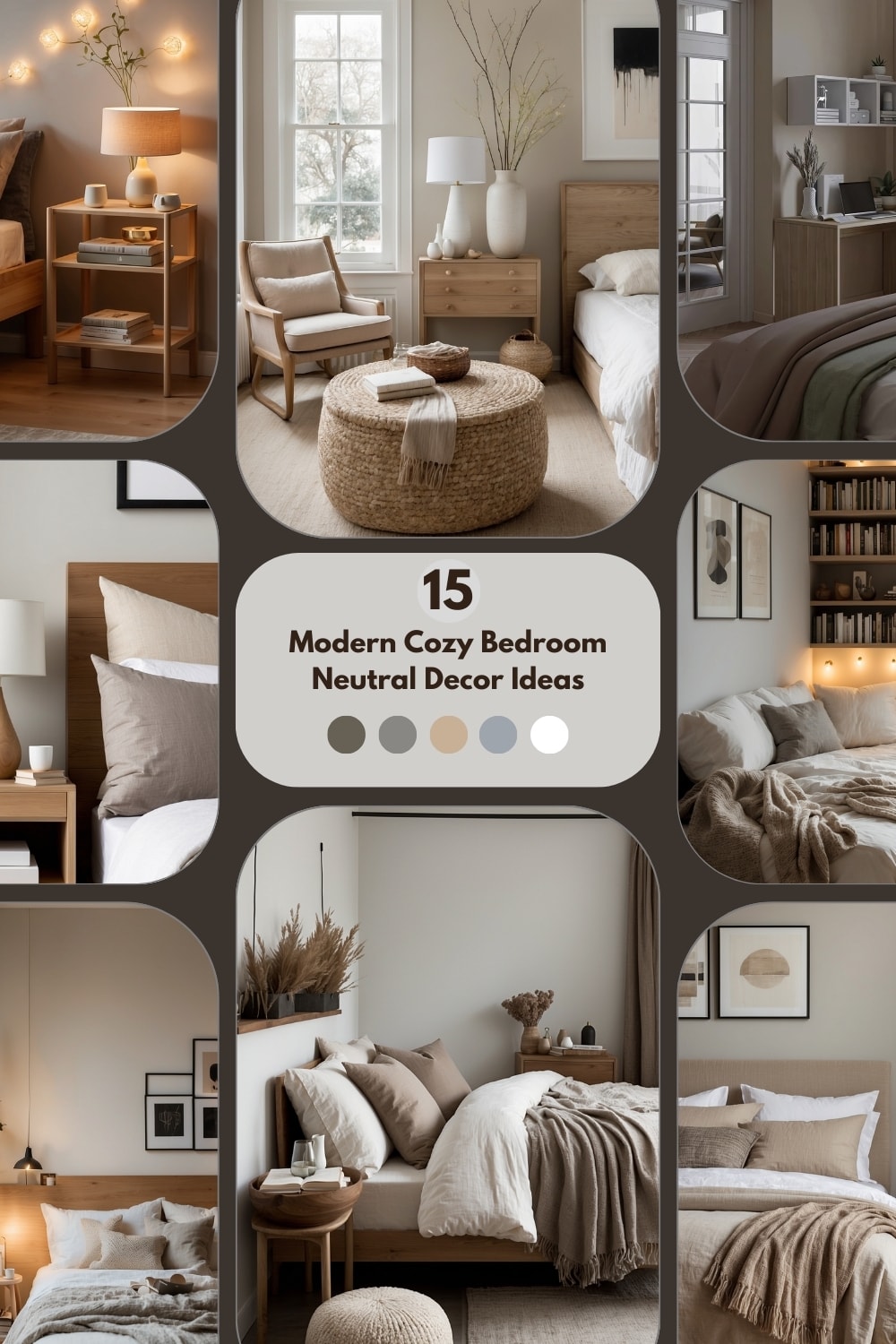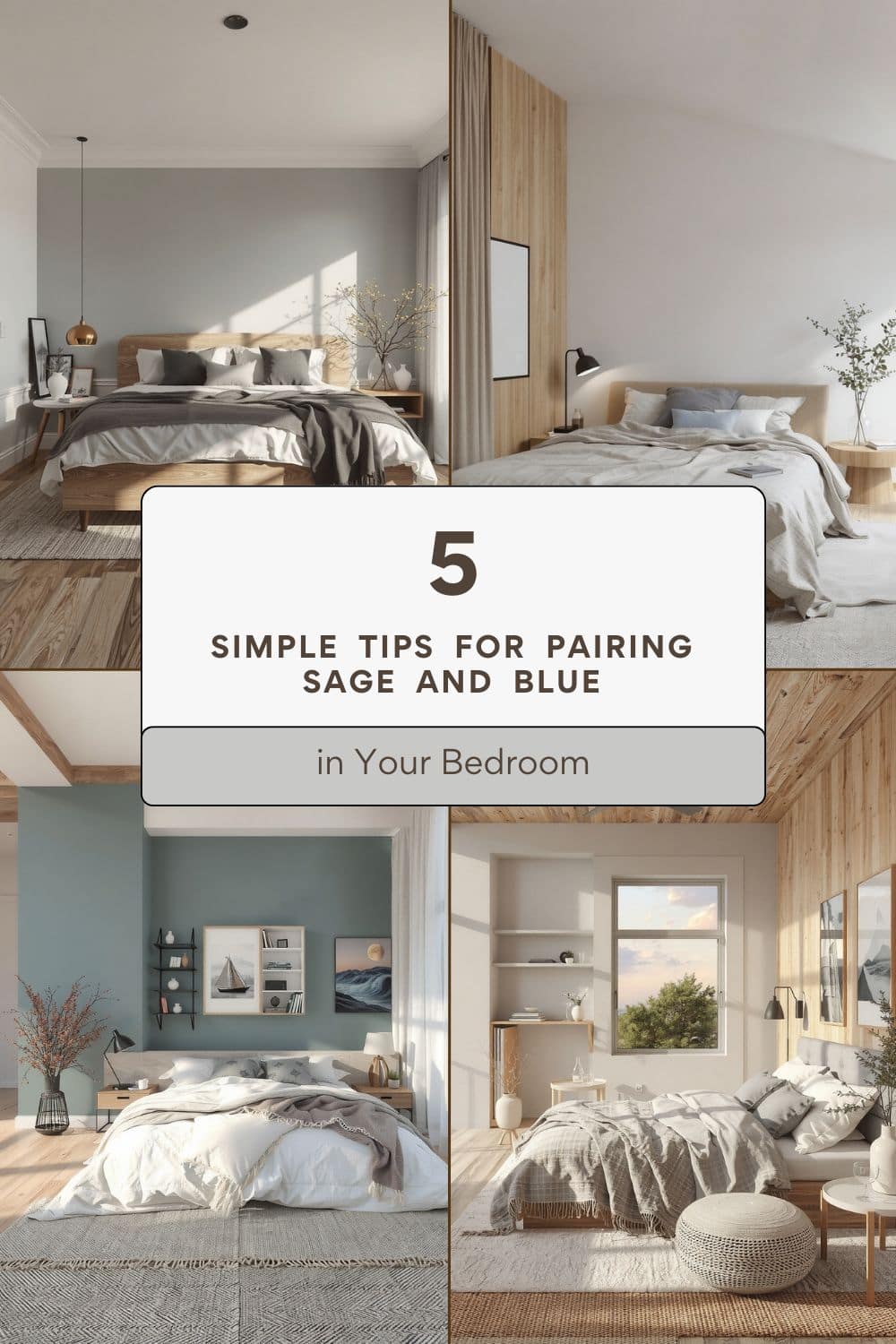A child’s bedroom is far more than just a place to sleep; it’s a dynamic canvas for growth, imagination, and learning. In today’s fast-paced world, designing a contemporary kids’ bedroom means creating a space that is not only aesthetically pleasing but also highly functional, adaptable, and a true reflection of your child’s evolving personality.
It’s about crafting an environment that supports their play, encourages their studies, and provides a serene haven for rest, all while seamlessly blending with your home’s modern aesthetic.
In this comprehensive guide, we’ll dive deep into over 50 inspiring contemporary kids’ bedroom ideas. You’ll discover cutting-edge design trends for 2024/2025, practical solutions for common challenges like storage and small spaces, and age-specific considerations to ensure the room truly grows with your child.
Get ready to transform your child’s bedroom into a stylish, functional, and joyful sanctuary they’ll absolutely love.
29 Inspiring Contemporary Kids’ Bedroom Ideas
Each of these ideas offers a unique starting point for creating a space that is both modern and perfectly suited for your child. We’ll explore how to bring these concepts to life with practical tips, smart material choices, and an understanding of how they can adapt as your child grows.
For optimal visual impact and page load speed, each idea should be accompanied by a single, high-quality, and unique image, rather than redundant duplicates.
1. Modern Minimalist Kids’ Bedroom
This style champions simplicity, clean lines, and neutral tones, creating a calming, uncluttered environment ideal for focus and tranquility.
- Practical Tips & Key Elements: Embrace essential furniture pieces, such as a sleek bed frame and a simple desk, to maintain open space. Opt for built-in storage or hidden compartments to keep clutter at bay, preserving those clean lines.
- Material & Product Recommendations: Think light woods, white or grey finishes, and natural textiles like cotton or linen. A plush, neutral-toned rug can add warmth without overwhelming the space.
- Why This Design Works: The absence of excessive visual stimuli promotes a serene atmosphere, which can be particularly beneficial for children who are easily overstimulated. It encourages imaginative play by leaving room for the child’s own creativity to fill the space.
- Adapting as the Child Grows: Minimalist designs are inherently versatile. Modular furniture can be reconfigured, and decor elements like wall art or bedding can be easily swapped out to reflect changing interests without a major overhaul.
2. Colorful and Fun Kids’ Bedroom Design
Injecting vibrant hues and bold patterns transforms a child’s room into an energetic and playful haven, stimulating creativity and joy.
- Practical Tips & Key Elements: Balance bright yellows, blues, or reds with neutral backdrops to prevent overwhelming the senses. Consider an accent wall with a bold pattern or a colorful mural. Incorporate designated play zones with bright rugs or child-sized furniture.
- Material & Product Recommendations: Use VOC-free, non-toxic paints for walls. Choose durable, easy-to-clean fabrics for bedding and upholstery. Colorful storage bins and baskets are perfect for organizing toys while adding to the vibrant aesthetic.
- Why This Design Works: Bright colors are known to stimulate mood and creativity, making the room an exciting place for play and learning. The playful atmosphere encourages imagination and self-expression.
- Adapting as the Child Grows: While bold, the core elements can remain. Change out specific themed accessories, update bedding patterns, or even repaint an accent wall as tastes evolve. Interactive wall art, like chalkboards, can also adapt.
3. Chic and Simple Contemporary Kids’ Room
This design embraces sleek furniture and a refined color palette to create a sophisticated yet functional space where children can grow and play.
- Practical Tips & Key Elements: Focus on clean lines and simple shapes for furniture. Use subtle accents like pastel-colored walls, patterned rugs, and minimalist lighting to enhance the overall design.
- Material & Product Recommendations: Opt for high-quality, durable materials that can withstand active play. Consider light wood tones, muted fabrics, and metallic accents for a touch of elegance.
- Why This Design Works: It provides a calming and stylish environment that doesn’t feel overly childish, allowing the room to mature with the child. The simplicity makes it easy to keep tidy.
- Adapting as the Child Grows: The timeless nature of this style means less need for major overhauls. Simply update accessories, artwork, or bedding to reflect changing interests.
4. Cozy Contemporary Kids’ Bedroom
Balancing soft textures, warm tones, and simple designs, this style creates a comfortable and inviting space that’s perfect for rest and relaxation.
- Practical Tips & Key Elements: Incorporate plush bedding, soft rugs, and cozy seating areas like beanbag chairs or floor cushions. Neutral colors such as beige, gray, and soft blues can be paired with warm touches like throw pillows or a comfy chair.
- Material & Product Recommendations: Prioritize soft, tactile fabrics like faux fur, wool, and thick cotton. Wooden furniture in warm tones adds to the inviting atmosphere.
- Why This Design Works: It offers a sense of warmth and security, making the bedroom a true retreat for the child. The comfortable elements encourage reading and quiet play.
- Adapting as the Child Grows: The neutral base allows for easy updates. Swap out throw pillows, blankets, or wall art to introduce new colors or themes without changing the core furniture.
5. Playful Contemporary Kids’ Bedroom Ideas
This design incorporates fun elements like bold wall decals, interactive furniture, and bright colors to foster creativity and learning.
- Practical Tips & Key Elements: Create distinct play zones, such as reading corners or art stations. Use playful patterns on wallpaper or textiles.
- Material & Product Recommendations: Durable, easy-to-clean surfaces are essential. Consider magnetic paint for an interactive wall or a chalkboard wall for endless drawing.
- Why This Design Works: It actively encourages imaginative play and provides dedicated spaces for various activities, making the room a hub of fun and development.
- Adapting as the Child Grows: Interactive elements like chalkboards can be updated with new drawings or messages. Wall decals can be easily removed or replaced as interests change.
6. Monochromatic Contemporary Kids’ Bedroom
Focusing on one dominant color, this style creates a cohesive and stylish look, using various shades to add depth and dynamism.
- Practical Tips & Key Elements: Choose a primary color (e.g., blue, green, or even a soft pink) and use its different tints, tones, and shades throughout the room. Vary textures to add visual interest.
- Material & Product Recommendations: Experiment with different fabrics like velvet, linen, and cotton in the chosen color family. Use subtle patterns to break up solid blocks of color.
- Why This Design Works: It offers a sophisticated and calming aesthetic while still allowing for personality through varied shades and textures. It feels cohesive and intentional.
- Adapting as the Child Grows: A monochromatic base is highly adaptable. Introduce accent colors through accessories as the child’s preferences evolve, or simply update the primary shade.
7. Bright and Bold Contemporary Kids’ Room
Transforming a bedroom into an energetic and lively environment, this design uses bold accent walls, vibrant furniture, and colorful accessories.
- Practical Tips & Key Elements: Use one or two bold colors as focal points, balancing them with neutral tones on other walls or larger furniture pieces to avoid overwhelming the room.
- Material & Product Recommendations: Durable, wipeable surfaces are practical for bright colors. Consider colorful storage solutions that double as decor.
- Why This Design Works: It stimulates imagination and creates an exciting space that reflects a child’s vibrant energy. The contrast of colors adds visual appeal.
- Adapting as the Child Grows: Bold elements can be toned down by swapping out accessories or repainting an accent wall. Neutral furniture provides a stable base for evolving tastes.
8. Scandinavian-Inspired Kids’ Bedroom
This style emphasizes simplicity, functionality, and natural elements, creating a bright, airy, and calming space.
- Practical Tips & Key Elements: Focus on light wood furniture, white or light-colored walls, and minimalist decor. Incorporate soft textures and natural light.
- Material & Product Recommendations: Pine or birch wood, wool rugs, and cotton bedding are ideal. Simple, functional storage solutions are key.
- Why This Design Works: It promotes a serene and organized environment, encouraging imaginative play without visual clutter. The natural elements create a warm and inviting feel.
- Adapting as the Child Grows: The timeless and neutral base of Scandinavian design makes it incredibly adaptable. Add pops of color or themed accessories that can be easily changed.
9. Contemporary Kids’ Room with Loft Bed
Ideal for maximizing space, a loft bed creates a distinct sleeping area while freeing up floor space underneath for other functions.
- Practical Tips & Key Elements: Utilize the space under the loft bed for a study nook, a play area, or additional storage. Ensure the ladder is sturdy and safe.
- Material & Product Recommendations: Choose a robust bed frame, often in metal or solid wood. Integrate built-in desks or shelving units underneath for seamless functionality.
- Why This Design Works: It’s a highly efficient use of vertical space, perfect for smaller rooms or for creating dedicated zones within a larger room. It also adds a fun, adventurous element for kids.
- Adapting as the Child Grows: The space underneath can transition from a play fort to a serious study area as the child matures.
10. Sleek and Stylish Kids’ Bedroom Ideas
This design focuses on sophisticated aesthetics with clean lines, modern finishes, and a refined color palette, often mirroring adult contemporary styles.
- Practical Tips & Key Elements: Opt for streamlined furniture with minimal ornamentation. Use a cohesive color scheme, perhaps with subtle patterns or textures for interest.
- Material & Product Recommendations: Consider lacquered finishes, polished metals, and high-quality fabrics. Built-in storage can maintain the sleek look.
- Why This Design Works: It creates a polished and elegant space that can easily transition from childhood to adolescence. It feels mature yet still appropriate for a child.
- Adapting as the Child Grows: The sophisticated base allows for easy updates through accessories. A child’s favorite colors can be introduced through bedding or artwork without disrupting the overall sleekness.
11. Space-Themed Contemporary Kids’ Room
Taking inspiration from the cosmos, this design features starry decals, space-themed bedding, and cool, dark tones, often with bright accents.
- Practical Tips & Key Elements: Use glow-in-the-dark stars on the ceiling or walls. Incorporate planets, rockets, or astronaut motifs through bedding, rugs, or wall art.
- Material & Product Recommendations: Dark blues, purples, and blacks for walls, with metallic or neon accents for stars and planets. Consider a projector for a starry night effect.
- Why This Design Works: It sparks imagination and a sense of wonder, creating an immersive environment for play and dreams.
- Adapting as the Child Grows: While themes can be outgrown, the core dark color palette can be retained and updated with more mature decor. Wall decals are easily removable.
12. Multi-functional Contemporary Kids’ Bedroom
Designed to serve multiple purposes, this room seamlessly integrates areas for sleeping, studying, and playing, maximizing utility.
- Practical Tips & Key Elements: Use convertible furniture like sofa beds or desks that fold away. Employ zoning strategies with rugs or furniture placement to define different areas.
- Material & Product Recommendations: Durable, easy-to-clean surfaces are essential. Modular storage units allow for flexible configurations.
- Why This Design Works: It’s highly efficient for smaller spaces or for children who need distinct zones for various activities. It promotes organization and versatility.
- Adapting as the Child Grows: The inherent flexibility of multifunctional furniture means the room can easily adapt from a play-centric space to a study-focused one as needs change.
13. Gender-Neutral Contemporary Kids’ Room
This design focuses on a balanced color palette and design elements that work for any child, moving away from traditional stereotypes.
- Practical Tips & Key Elements: Opt for soft grays, whites, yellows, and greens. Themes like animal safari, outer space, or geometric patterns are universally appealing.
- Material & Product Recommendations: Natural wood furniture, simple textiles, and abstract art create a welcoming and versatile space.
- Why This Design Works: It offers flexibility and longevity, as the room doesn’t need to be redecorated if gender preferences change or if siblings of different genders share the room. It promotes inclusivity.
- Adapting as the Child Grows: The neutral base is highly adaptable. Personal touches can be added through easily changeable accessories like bedding, pillows, or artwork.
14. Sports-Inspired Contemporary Kids’ Bedroom
Celebrating athleticism and favorite sports, this design incorporates elements like team colors, sports equipment, and themed decor.
- Practical Tips & Key Elements: Use team colors as accents. Display sports memorabilia or equipment as decor. Consider a mini basketball hoop or a goal net for active play.
- Material & Product Recommendations: Durable flooring is ideal for active play. Themed bedding and wall decals can easily bring the sport to life.
- Why This Design Works: It allows children to express their passion for sports and creates an energetic, motivating environment.
- Adapting as the Child Grows: As sports interests change, accessories can be swapped out. The core furniture can remain neutral.
15. Contemporary Kids’ Bedroom with Built-In Storage
Maximizing space and minimizing clutter, built-in storage solutions are seamlessly integrated into the room’s architecture.
- Practical Tips & Key Elements: Design custom shelving, drawers, or cabinets that fit perfectly into alcoves or along walls. Consider built-in beds with storage underneath.
- Material & Product Recommendations: Match the built-in units to the room’s overall aesthetic, using wood, painted MDF, or laminate.
- Why This Design Works: It provides extensive, discreet storage, keeping the room tidy and organized. It also creates a streamlined, custom look.
- Adapting as the Child Grows: Built-in storage is highly adaptable. Shelves can hold toys, then books, then personal items as the child matures.
16. Artistic Contemporary Kids’ Room Design
This design encourages creativity and self-expression through vibrant colors, unique patterns, and dedicated art spaces.
- Practical Tips & Key Elements: Install a large chalkboard or whiteboard wall. Create an art station with an easel and storage for supplies. Display the child’s own artwork prominently.
- Material & Product Recommendations: Use non-toxic paints and art supplies. Consider durable, easy-to-clean surfaces for the art area.
- Why This Design Works: It fosters artistic development and provides a dedicated outlet for creative expression, making the room a source of inspiration.
- Adapting as the Child Grows: The art displayed can evolve with their skills and interests. The art station can transition into a more formal study desk.
17. Contemporary Kids’ Bedroom with Interactive Wall Art
Walls become dynamic canvases for play and learning, featuring elements that children can touch, move, or draw on.
- Practical Tips & Key Elements: Install magnetic paint, chalkboard paint, or large wall decals that can be rearranged. Consider a climbing wall or a pegboard system for interactive display.
- Material & Product Recommendations: Durable, washable wall finishes are essential. Ensure any interactive elements are securely mounted and child-safe.
- Why This Design Works: It transforms passive walls into engaging play surfaces, encouraging physical activity and creative expression.
- Adapting as the Child Grows: Interactive elements can be updated or removed as the child’s interests change, or the wall can be repainted for a more mature look.
18. High-tech and Modern Kids’ Bedroom
Integrating smart gadgets and innovative features, this design creates a futuristic and convenient living space.
- Practical Tips & Key Elements: Incorporate smart lighting systems that change color or brightness. Use voice-controlled devices for music or alarms. Consider interactive projections or gaming setups.
- Material & Product Recommendations: Sleek, minimalist furniture. Hidden wiring solutions for a clean look.
- Why This Design Works: It appeals to tech-savvy children and offers convenience and innovative ways to interact with their environment.
- Adapting as the Child Grows: Technology evolves rapidly, so choose systems that are easily upgradeable. Ensure a healthy balance with screen time.
19. Nautical Contemporary Kids’ Bedroom
Evoking the calmness and charm of the sea, this design features navy blue and white tones, maritime-inspired bedding, and stylish boat-shaped furniture.
- Practical Tips & Key Elements: Use stripes, anchors, or ship wheel motifs. Incorporate natural textures like rope or driftwood.
- Material & Product Recommendations: Blues, whites, and reds are classic nautical colors. Wooden furniture and crisp cotton bedding enhance the theme.
- Why This Design Works: It creates a serene yet adventurous atmosphere, appealing to children who love the ocean or exploration.
- Adapting as the Child Grows: The core blue and white palette is timeless. Themed accessories can be easily swapped out for a more mature look.
20. Classic and Clean Contemporary Kids’ Room
This style combines timeless elements with modern simplicity, resulting in an elegant and enduring design.
- Practical Tips & Key Elements: Focus on well-crafted, durable furniture pieces. Use a neutral color palette with subtle pops of color through accessories.
- Material & Product Recommendations: Solid wood furniture, quality fabrics, and classic patterns like subtle plaids or stripes.
- Why This Design Works: It offers a sophisticated and uncluttered look that will not quickly go out of style. It provides a calm and organized environment.
- Adapting as the Child Grows: This design is inherently “grow-with-them.” The classic foundation allows for endless personalization through changing accessories and artwork.
21. Monochrome Dream Kids’ Bedroom
A variation of the monochromatic theme, this focuses specifically on black, white, and shades of gray for a sophisticated and graphic look.
- Practical Tips & Key Elements: Use bold patterns like stripes, polka dots, or geometric shapes in black and white. Add texture through different fabrics.
- Material & Product Recommendations: White furniture, black accents, and gray textiles. Consider a pop of a single bright color (e.g., yellow or red) for a playful touch.
- Why This Design Works: It creates a chic, modern, and visually striking space that is both calming and stimulating. It’s easy to keep clean and organized.
- Adapting as the Child Grows: The monochrome base is incredibly versatile. Any accent color can be introduced or changed as the child’s preferences evolve.
22. Soft Pastels in Contemporary Kids’ Room
Utilizing gentle, muted hues, this design creates a serene, dreamy, and calming atmosphere.
- Practical Tips & Key Elements: Combine soft pinks, blues, greens, and yellows. Use gradients or subtle patterns.
- Material & Product Recommendations: Light-colored wood or white furniture. Soft, plush textiles like cotton or linen.
- Why This Design Works: Pastels are soothing and create a peaceful environment, ideal for younger children or those who need a calming space.
- Adapting as the Child Grows: As children grow, bolder colors can be introduced through accessories, or the pastel base can serve as a gentle backdrop for more vibrant themes.
23. Contemporary Kids’ Bedroom with Play Zone
Dedicated to fostering active play and imagination, this design clearly defines an area for games, toys, and creative activities.
- Practical Tips & Key Elements: Use a large rug to delineate the play zone. Incorporate child-sized furniture like a small table and chairs. Provide accessible, organized storage for toys.
- Material & Product Recommendations: Durable, easy-to-clean flooring and surfaces. Colorful storage bins and baskets.
- Why This Design Works: It encourages physical activity and imaginative play while keeping the rest of the room tidy. It provides a clear boundary for playtime.
- Adapting as the Child Grows: The play zone can transition into a study area, a lounge space, or a hobby zone as the child’s interests evolve.
24. Contemporary Kids’ Room with Adjustable Furniture
This design prioritizes longevity and adaptability by incorporating furniture that can be modified as the child grows.
- Practical Tips & Key Elements: Invest in convertible cribs that become toddler beds and then full beds. Choose desks with adjustable heights.
- Material & Product Recommendations: High-quality, durable wood or metal furniture that can withstand years of use and adjustments.
- Why This Design Works: It’s a cost-effective and sustainable solution, reducing the need to replace furniture frequently. It ensures the room remains functional at every stage of development.
- Adapting as the Child Grows: The furniture literally grows with the child, making it the ultimate “grow-with-them” design.
25. Bold Color Blocks in Contemporary Kids’ Bedroom
Using distinct sections of vibrant colors, this design creates a modern, graphic, and energetic aesthetic.
- Practical Tips & Key Elements: Paint large geometric shapes or distinct sections of walls in contrasting bold colors. Use furniture or rugs to extend the color-blocking effect.
- Material & Product Recommendations: High-quality, durable paints. Consider using different textures within each color block for added interest.
- Why This Design Works: It creates a dynamic and playful visual impact. It can define zones within a room without needing physical dividers.
- Adapting as the Child Grows: Color blocks can be repainted or updated with new colors as tastes change, offering a relatively easy way to refresh the room’s look.
26. Cartoon-Inspired Contemporary Kids’ Room
Bringing beloved characters or animated styles to life, this design creates a whimsical and imaginative space.
- Practical Tips & Key Elements: Use themed wallpaper or murals featuring cartoon characters. Incorporate bedding and accessories that match the theme.
- Material & Product Recommendations: Non-toxic paints and materials. Durable fabrics for bedding and upholstery.
- Why This Design Works: It allows children to immerse themselves in their favorite fictional worlds, sparking imagination and joy.
- Adapting as the Child Grows: Themes can be outgrown. Consider using easily removable wall decals or accessories that can be swapped out as interests change, keeping core furniture neutral.
27. Luxury Contemporary Kids’ Bedroom Design
This design focuses on high-end materials, sophisticated finishes, and bespoke elements to create an opulent yet child-friendly space.
- Practical Tips & Key Elements: Invest in custom-built furniture, designer lighting, and premium textiles. Focus on refined details and craftsmanship.
- Material & Product Recommendations: High-quality woods, marble accents, plush velvets, and silk. Consider integrated smart home features for added convenience.
- Why This Design Works: It creates a truly unique and elegant space that feels special and indulgent. It can seamlessly blend with a luxurious home aesthetic.
- Adapting as the Child Grows: The high-quality, timeless pieces can be adapted with subtle changes in accessories or artwork, ensuring the room remains sophisticated as the child matures.
28. Glamorous Contemporary Kids’ Room Ideas
Infusing sparkle, shine, and elegant touches, this design creates a chic and dazzling environment.
- Practical Tips & Key Elements: Incorporate metallic accents (gold, silver, rose gold), mirrored surfaces, and crystal details. Use plush, luxurious fabrics.
- Material & Product Recommendations: Velvet, satin, and faux fur for textiles. Mirrored furniture, crystal chandeliers, and sequined accents.
- Why This Design Works: It creates a whimsical and enchanting space that appeals to children who love sparkle and fantasy.
- Adapting as the Child Grows: While the glam elements can be strong, the core furniture can be neutral. Accessories can be toned down or swapped out for a more mature, sophisticated look.
29. Sporty Chic Contemporary Kids’ Bedroom
A refined take on sports themes, this design blends athletic elements with modern aesthetics for a stylish and dynamic space.
- Practical Tips & Key Elements: Use subtle sports motifs rather than overt branding. Incorporate clean lines and a sophisticated color palette (e.g., deep blues, grays, and whites with pops of a team color).
- Material & Product Recommendations: Sleek metal or dark wood furniture. Textured fabrics. Display sports equipment as art.
- Why This Design Works: It appeals to sports enthusiasts without being overly childish, creating a stylish and inspiring environment.
- Adapting as the Child Grows: The chic base allows for easy adaptation. As sports interests change, the specific memorabilia or accent colors can be updated without redoing the entire room.
Latest Kids’ Bedroom Design Trends (2024/2025)
The world of interior design is constantly evolving, and kids’ bedrooms are no exception. The trends for 2024/2025 reflect a deeper understanding of children’s needs, environmental consciousness, and the desire for adaptable, stimulating spaces.
- Multifunctional Spaces: Study, Play, Sleep Homes are adapting to flexible lifestyles, and kids’ bedrooms are leading the way. In 2025, multifunctional spaces are key, with bedrooms serving as integrated study areas, vibrant play zones, and serene sleep havens.
- Convertible and Adaptive Furniture: Invest in pieces that serve multiple purposes, such as bunk beds with built-in storage, adjustable desks that grow with your child, or daybeds that convert from seating to sleeping.
- Zoning Strategies for Different Activities: Use rugs, furniture arrangement, or even different lighting to visually delineate areas for various activities. A colorful rug can define a play area, while a desk and chair can clearly mark a study zone.
- Nature-Inspired & Biophilic Design Connecting interiors with nature is a growing trend, fostering a calming environment and sparking curiosity in children.
- Earthy Color Palettes and Natural Materials: Embrace soothing earthy tones like greens, blues, and beiges. Incorporate wooden furniture, woven rugs, and cotton fabrics to bring the outdoors in.
- Integration of Indoor Plants and Nature Motifs: Add child-safe indoor plants, nature-inspired wallpapers, or murals depicting forests, mountains, or animals to create a sense of wonder and tranquility.
- Smart Technology Integration As technology becomes integral to learning and entertainment, modern bedrooms are embracing smart integration.
- Smart Lighting and Interactive Walls: Consider adjustable lighting that can mimic natural daylight for study or dim for bedtime. Chalkboard or whiteboard sections on walls offer interactive creative outlets.
- Voice-Controlled Gadgets: Smart devices can manage lights, music, and even homework reminders, adding a futuristic touch while maintaining a healthy balance with screen time.
- Personalized & Unique Spaces Children thrive in spaces that reflect their unique personalities and interests.
- Reflecting the Child’s Personality: Encourage participation in decorating. Customized furniture, like beds shaped like cars or castles, can be a focal point.
- DIY Wall Art and Name Decor: Display their own artwork in simple frames. Use wall decals or LED name signs to add a personal touch that makes the room feel truly theirs.
- Sustainable & Eco-Friendly Designs Sustainability remains a top priority, with parents opting for eco-conscious materials and practices.
- VOC-Free Paints and Recycled Materials: Choose non-toxic, VOC-free paints for a healthier indoor environment. Look for furniture made from reclaimed wood or recycled plastics.
- Energy-Efficient Solutions: Utilize LED lights and consider solar-powered gadgets where feasible. These choices contribute to a greener planet and teach kids the importance of sustainability.
- Maximalism & Bold Color Play Moving away from strict minimalism, 2024 embraces color, patterns, and “creative clutter”.
- Embracing Colors, Patterns, and “Creative Clutter”: Don’t shy away from vibrant hues and intricate patterns. Think bold wallpaper, colorful textiles, and a mix of textures.
- The “Peach Fuzz” Color Trend: This versatile, sun-soaked shade is rising in popularity, pairing seamlessly with greys or deeper wood tones, and can be accessorized for either feminine or masculine aesthetics.
- Mixing Old & New: Modern Vintage Touches Combine heirloom pieces or vintage elements with modern influences to create unique, character-rich spaces.
- Combining Heirloom Pieces with Modern Influences: An antique desk paired with a contemporary chair, or vintage-inspired lighting with sleek, modern furniture, creates an eclectic and timeless look.
- Fine Craftsmanship and Unique Designs: Look for modern furniture with rounded edges and elaborate details, reflecting a focus on quality and unique design.
- Inclusive Gender-Neutral Designs A growing shift away from traditional stereotypes, gender-neutral designs offer flexibility and versatility.
- Neutral Palettes and Versatile Themes: Opt for soft greys, yellows, whites, and greens. Themes like animal safari, outer space, or geometric patterns work well for any child.
- Simple, Timeless Pieces: Choose furniture that is simple and timeless, easily adaptable as the child grows and their preferences change.
Age-Specific Design Guide for Kids’ Rooms
Designing a room that evolves with your child is key to creating a truly contemporary and sustainable space.
- Contemporary Bedrooms for Toddlers (0-3 Years) For the youngest residents, safety and accessibility are paramount.
- Focus on Safety and Low Furniture: Ensure all elements are made of non-toxic materials and furniture has rounded corners to reduce injury risk. Low beds and accessible shelving encourage independence.
- Designated Play Zones and Easy-Clean Solutions: Create clear, soft play areas. Choose durable, easy-to-clean surfaces and materials to handle inevitable messes.
- Kids’ Room Designs for Ages 4-10 This age group is bursting with creativity and developing hobbies.
- Encouraging Creativity and Hobbies: Incorporate a craft table, a reading nook, or a dedicated area for their favorite activities. Display their artwork to foster a sense of pride and ownership.
- Designated Play and Study Areas: Clearly define zones for play and learning. A desk with good lighting is crucial for homework, while ample storage for toys and books keeps the play area organized.
- Contemporary Teen Bedroom Ideas (11+ Years) Teenagers need a space that reflects their evolving interests, provides privacy, and supports their academic and social lives.
- Reflecting Evolving Interests and Personal Expression: Allow them significant input in decor choices. Modern aesthetics, personalized wall art, and comfortable seating for friends are often desired.
- Dedicated Study Spaces and Ample Storage: A functional desk with proper lighting is essential. Provide plenty of storage for clothes, gadgets, and personal items, perhaps with built-in cabinets or stylish shelving.
- Grow-With-Them Furniture: A Smart Investment Choosing adaptable furniture is a cornerstone of contemporary kids’ room design.
- Convertible Cribs and Adjustable Desks: Cribs that convert into toddler beds and then full-sized beds offer longevity. Desks with adjustable heights can serve them from childhood through their teen years.
- Easily Replaceable Decor Elements: Focus on neutral, durable core furniture pieces, and use accessories like pillows, rugs, and wall art for pops of color and theme, as these are easy and affordable to update.
Practical Solutions for Kids’ Bedrooms
Beyond aesthetics, a contemporary kids’ bedroom must be highly functional and address common challenges.
- Smart & Clutter-Free Storage Strategies Kids accumulate a lot, so effective storage is non-negotiable.
- Built-in Shelving, Vertical Storage, and Multifunctional Furniture: Maximize space with built-in cupboards and wall-mounted shelves. Beds with hidden compartments or storage ottomans are excellent dual-purpose pieces.
- Labeled Bins and Under-Bed Storage: Use labeled crates and wicker baskets to categorize toys and clothes, making cleanup easier for children. Under-bed storage is perfect for seasonal items or extra bedding.
- Maximizing Small Spaces Even compact rooms can be stylish and functional with clever design.
- Bunk/Cabin Beds and Multi-purpose Furniture: Raised single beds or cabin beds free up valuable floor space for desks, play areas, or extra storage underneath. Choose furniture that serves multiple purposes, such as a desk that doubles as a dressing table.
- Room Zoning: Delineating Functional Areas Divide the space into distinct zones for different activities to maintain order and encourage various types of engagement.
- Using Rugs, Furniture Arrangement, or Lighting: A colorful rug can visually separate a play area, while a screen or bookshelf can create a cozy reading nook. Different lighting can also define zones, with brighter lights for play and softer ones for relaxation.
- Innovative Lighting for Every Activity Lighting is fundamental, influencing mood and functionality.
- Adequate Lighting for Play/Study and Dimmable Options for Bedtime: Ensure bright, focused lighting for study and play areas. Incorporate dimmable lights or nightlights for a calming transition to sleep.
- Choosing the Right Color Scheme Colors play a significant role in creating the room’s atmosphere.
- Using Bold Colors and Balancing with Neutrals: While bold colors stimulate creativity, balance them with neutral tones on walls or larger furniture pieces to avoid overwhelming the room.
- Specific Color Recommendations for Moods: Light blue promotes relaxation, bright yellow enhances happiness and creativity, and light green offers freshness and calm.
Safety & Materials: A Top Priority
When designing for children, safety should always be the foremost consideration.
- Selecting Non-Toxic & Safe Materials The materials you choose directly impact your child’s health and well-being.
- VOC-Free Paints and Natural Materials: Opt for paints with low or no VOCs (Volatile Organic Compounds) to ensure healthier air quality. Prioritize natural and sustainable materials like solid wood, organic cotton, and wool.
- Child-Safe Furniture Design Beyond materials, the design of the furniture itself is crucial for preventing accidents.
- Rounded Corners and Sturdy Construction: Choose furniture with rounded edges to minimize injury risk. Ensure all pieces are sturdy, stable, and securely anchored to prevent tipping.
Conclusion
Creating a contemporary kids’ bedroom is an exciting journey that blends style, functionality, and a deep understanding of your child’s evolving needs. By embracing modern design principles, integrating the latest trends, and prioritizing practical solutions and safety, you can craft a space that is not only beautiful but also truly supports their growth, learning, and dreams.
Remember, the ultimate experts on what kids like are kids themselves. Involve them in the process, and watch as their room transforms into a personalized sanctuary they’ll cherish for years to come. Take these inspirations and turn your child’s bedroom into a space they’ll absolutely love!



